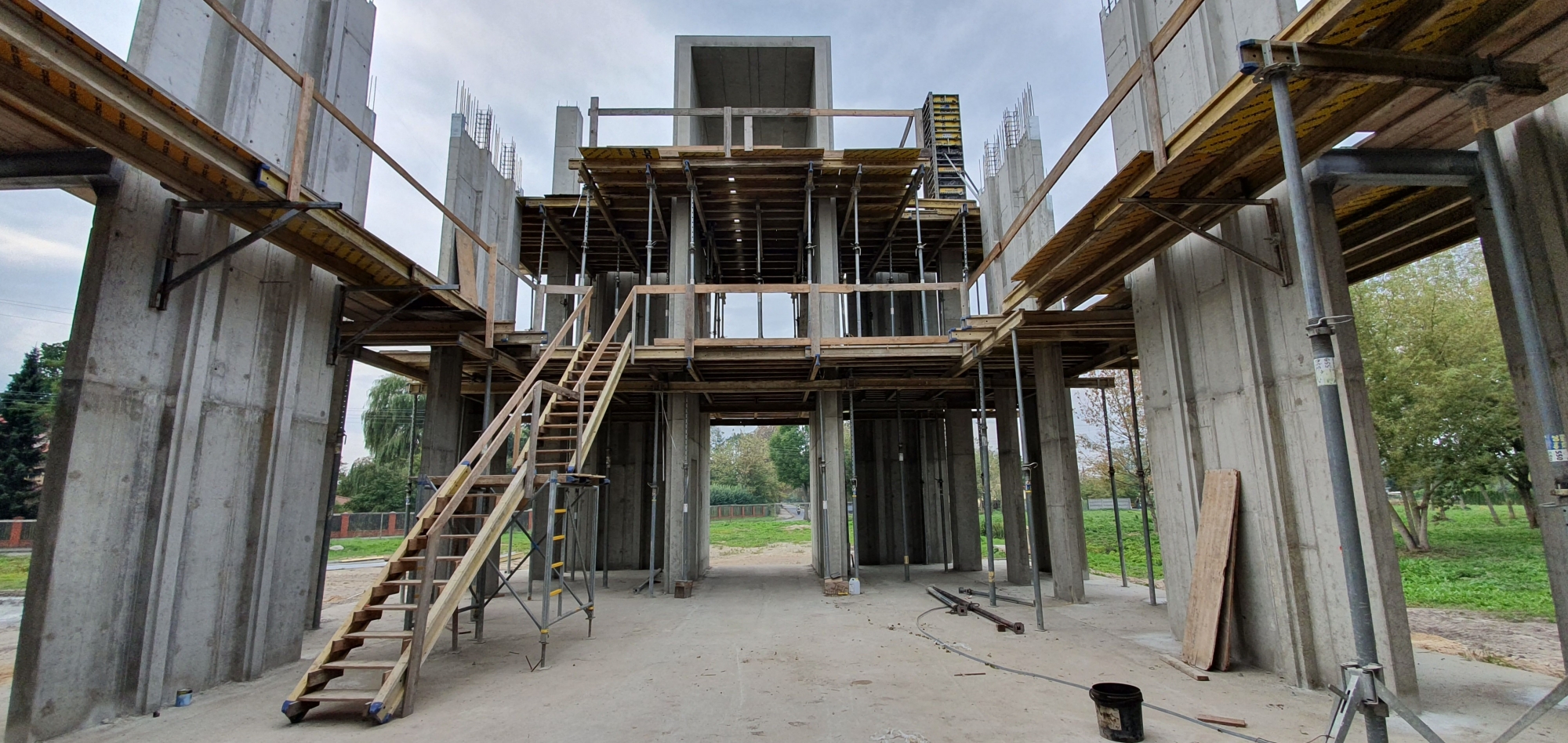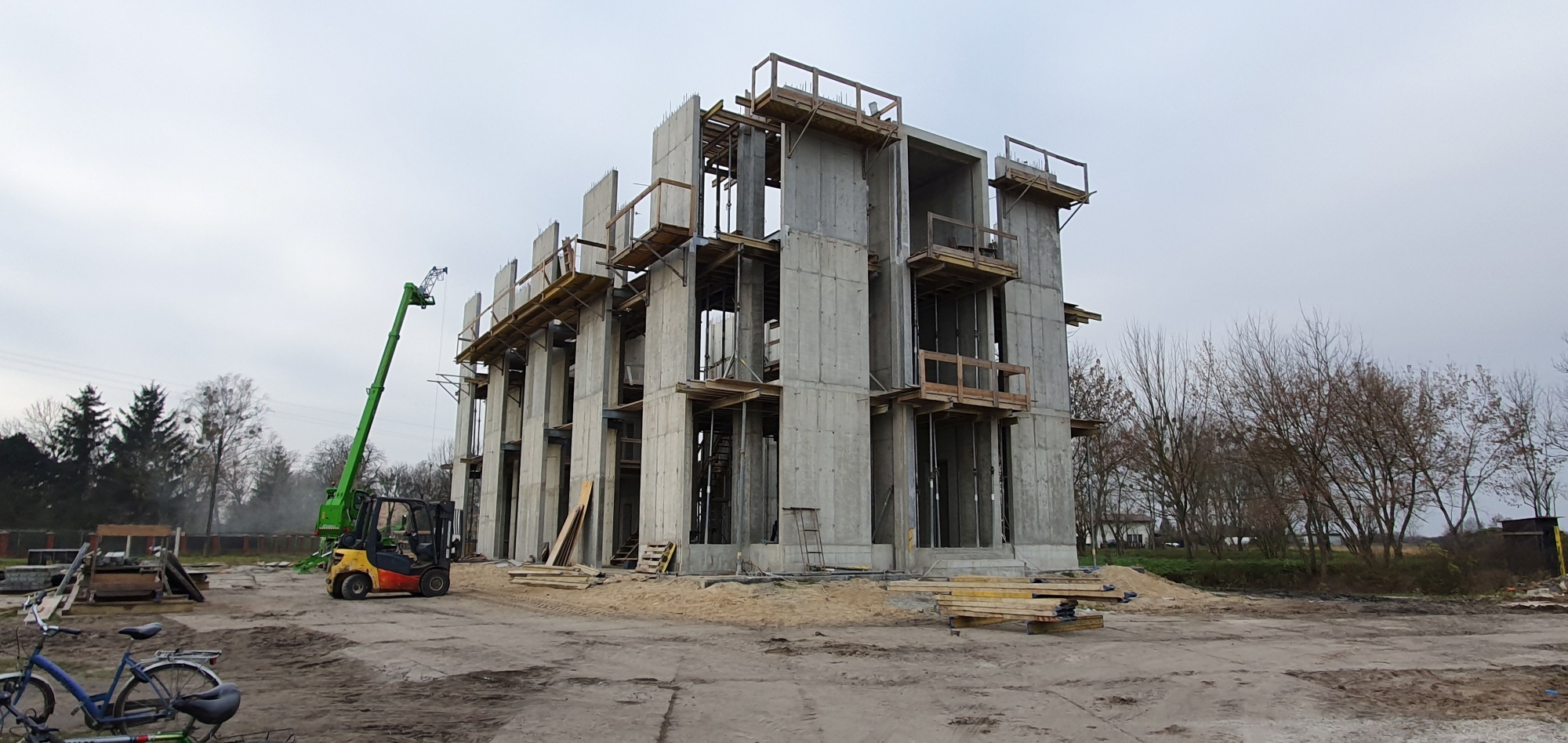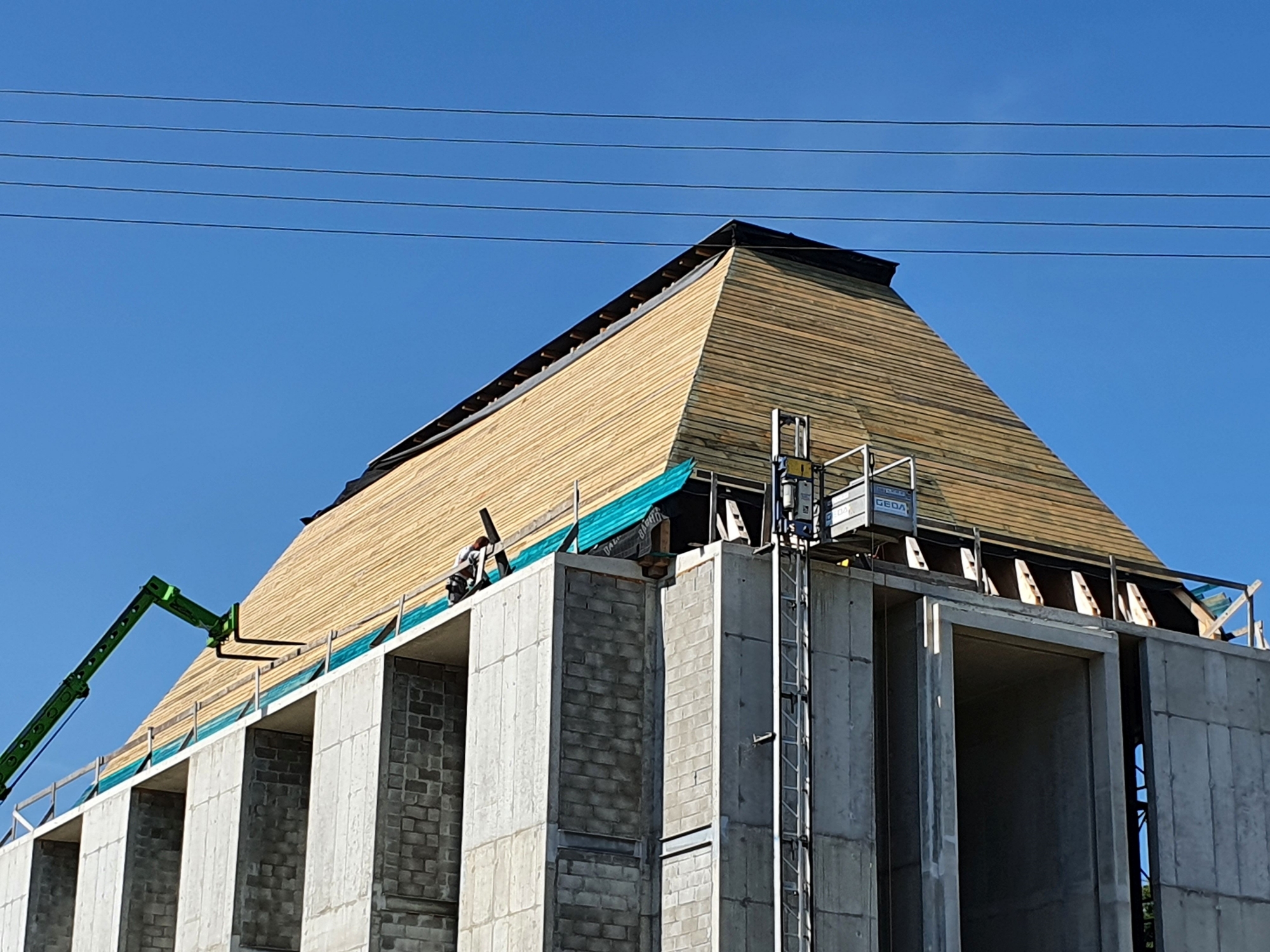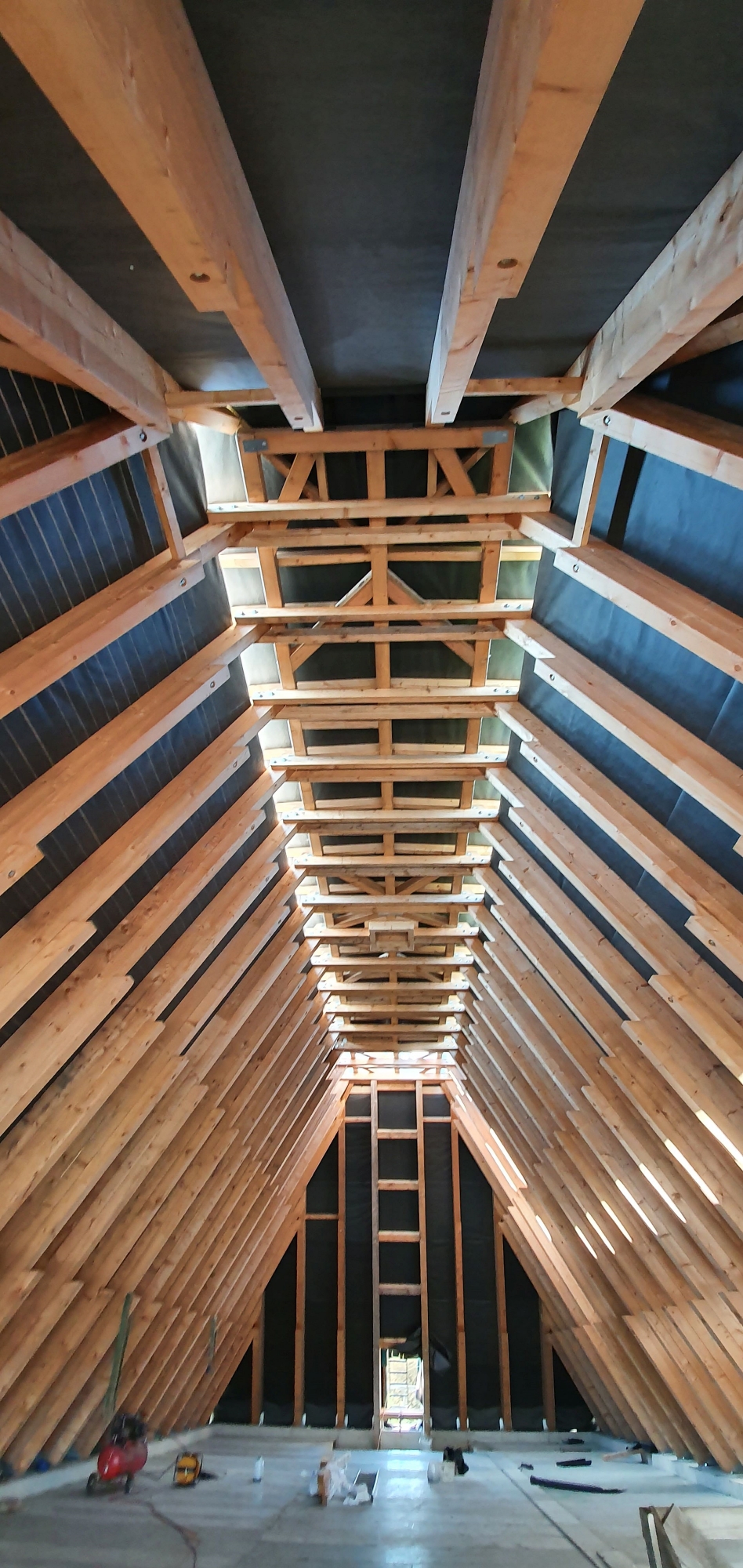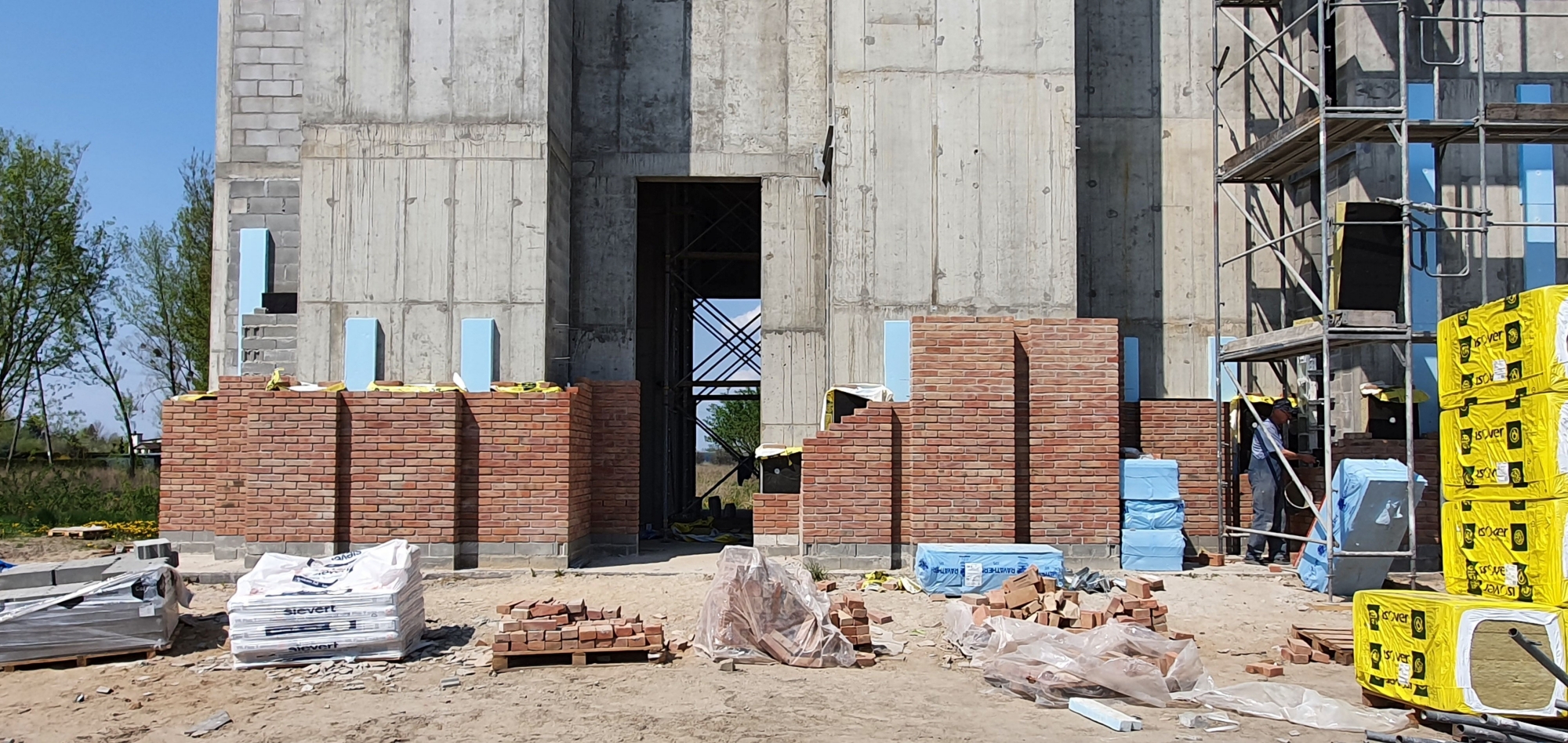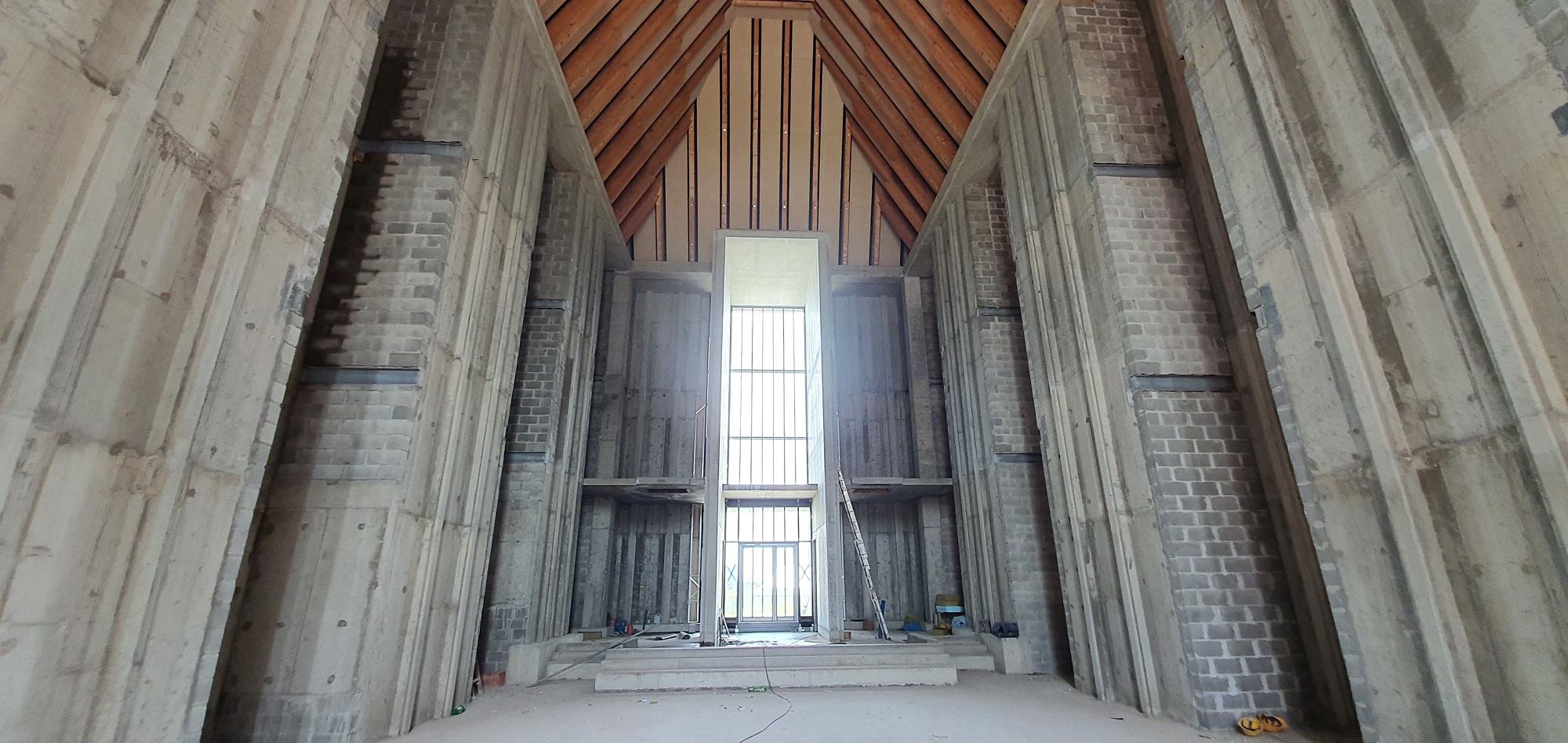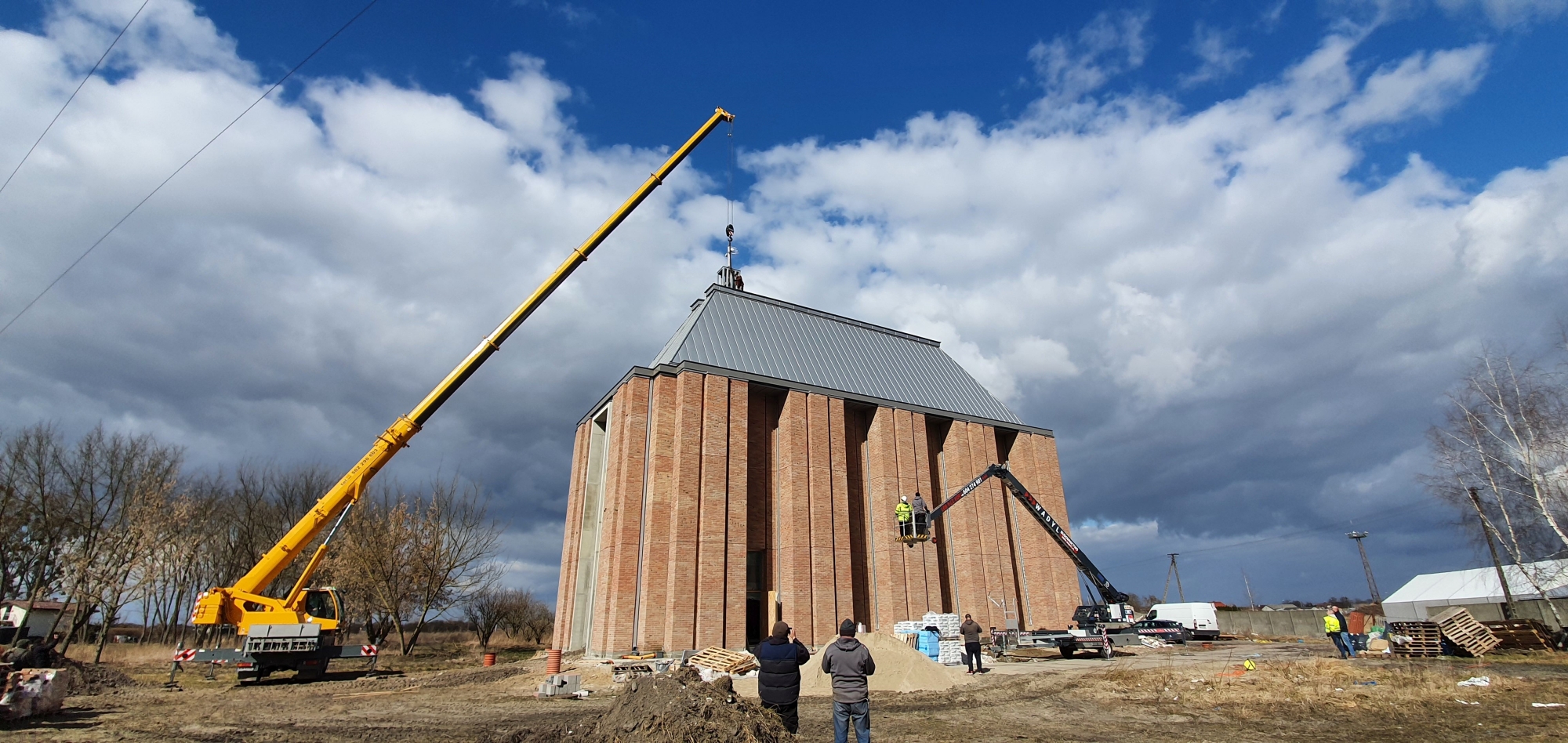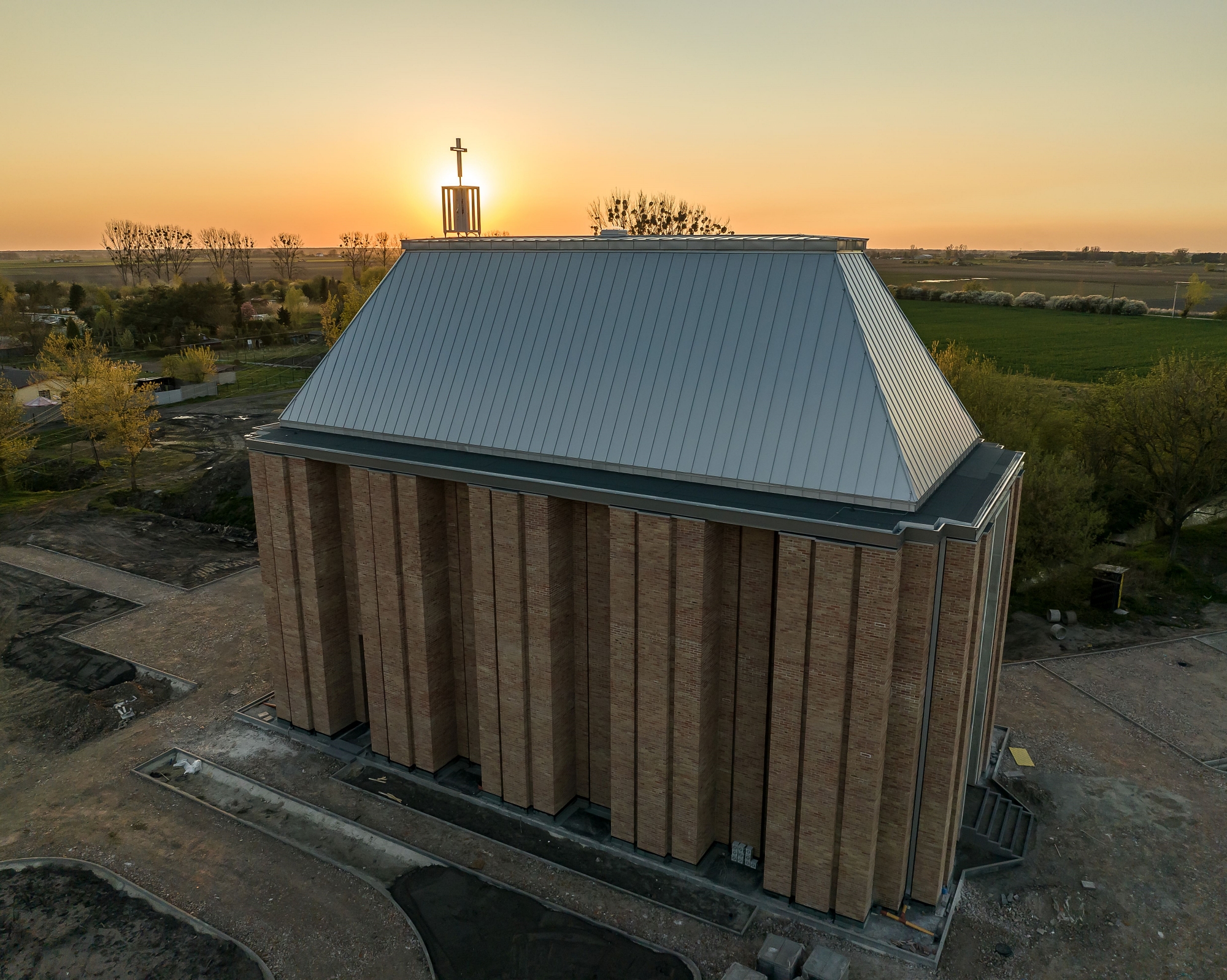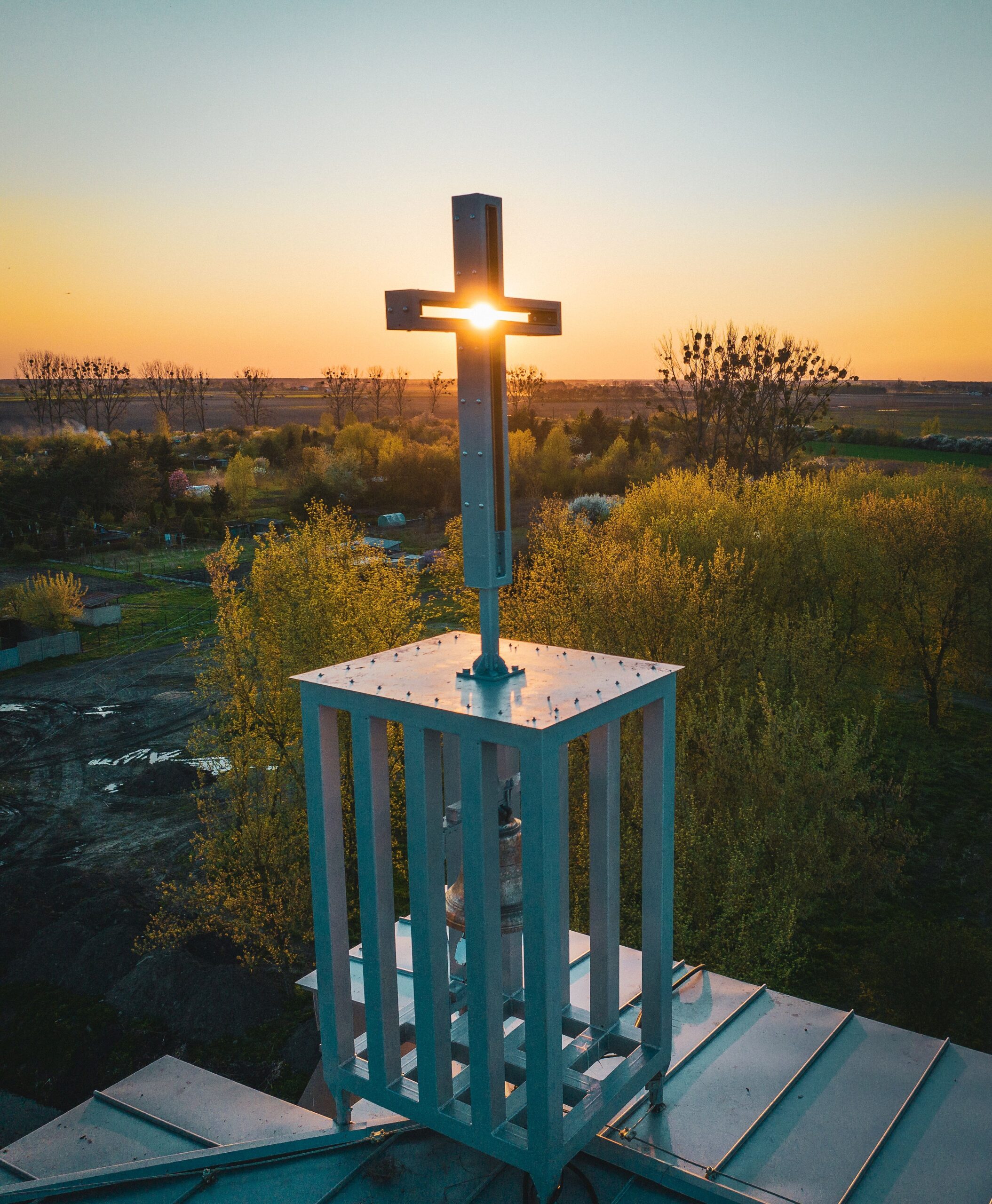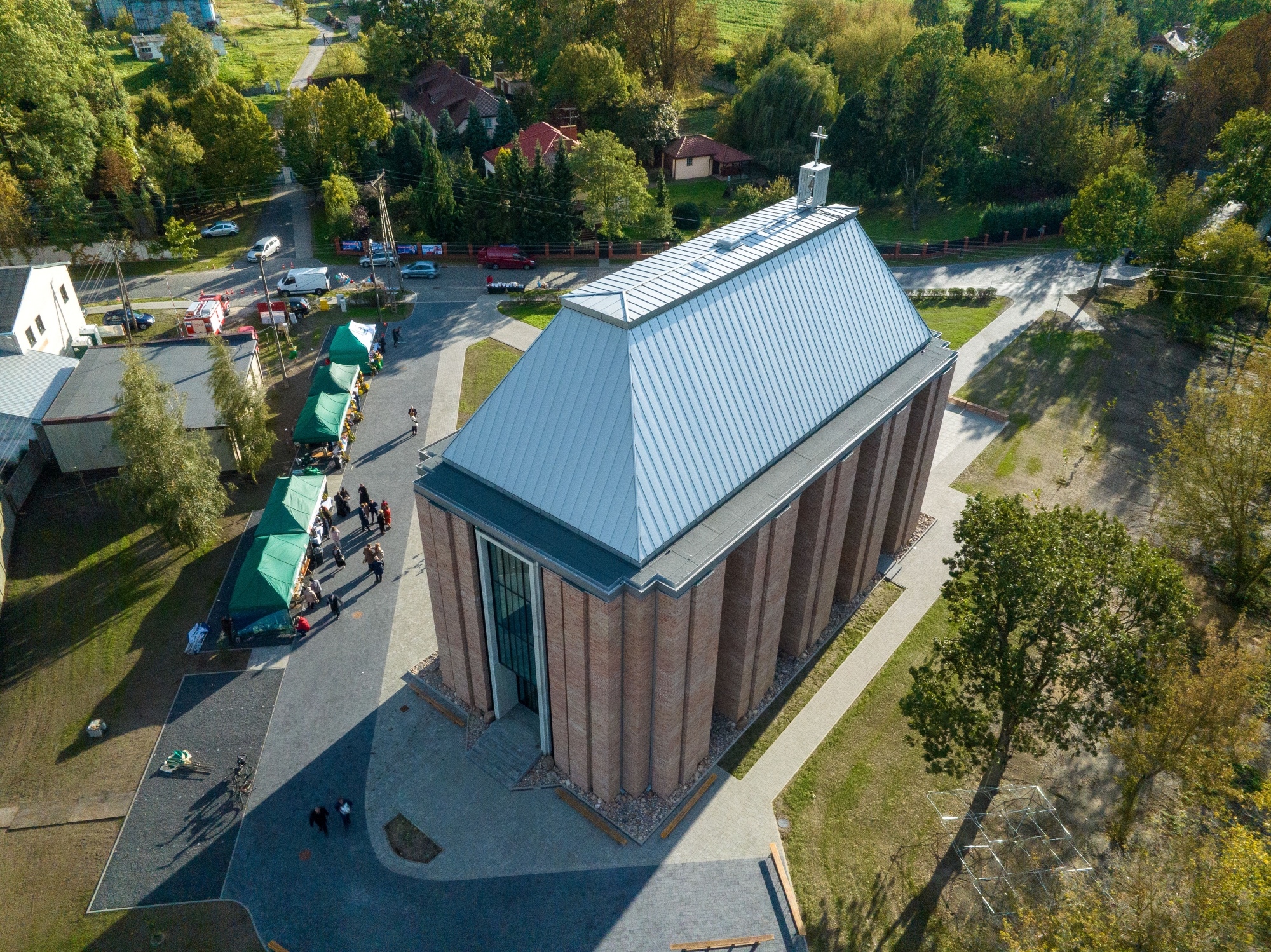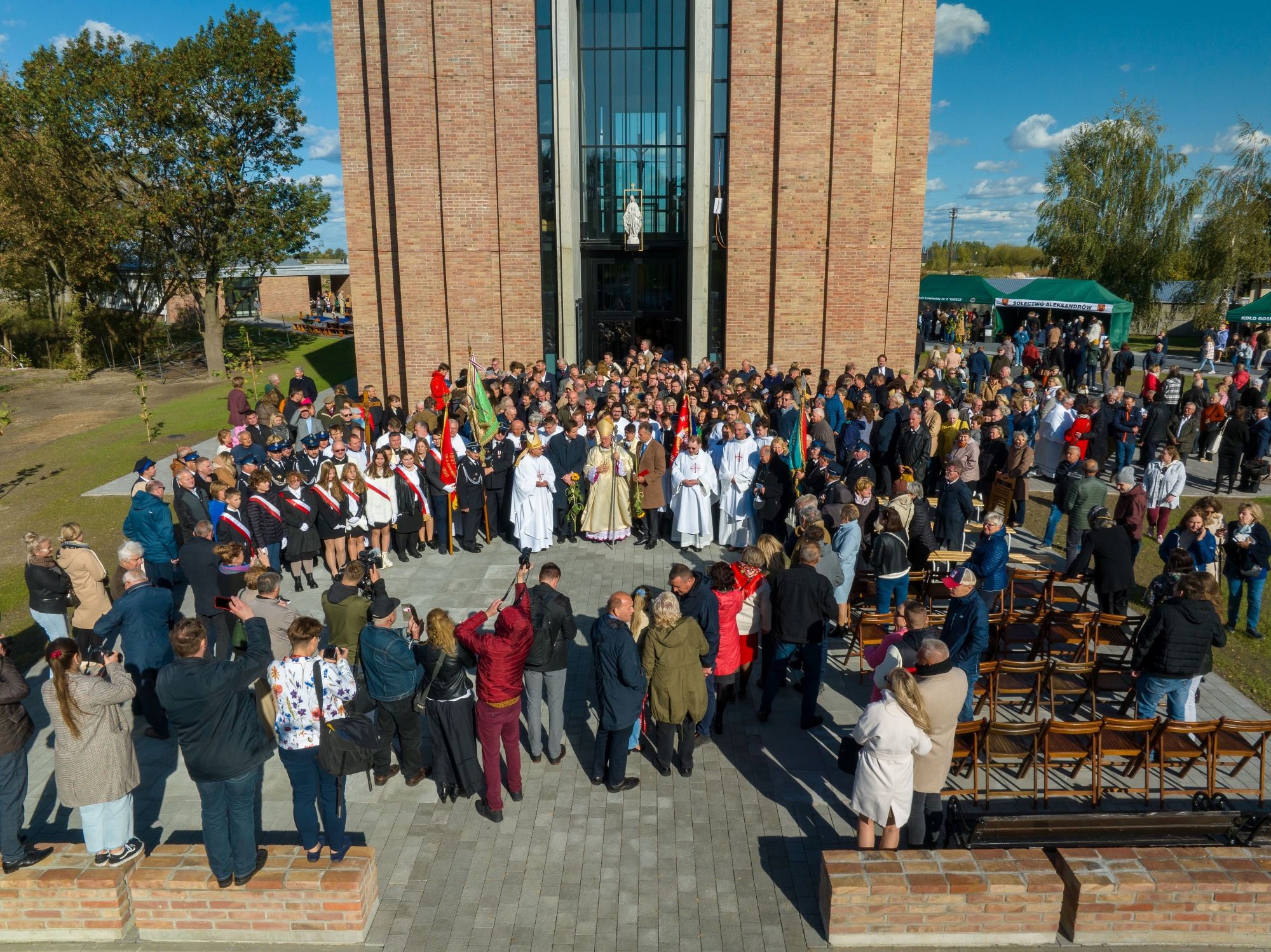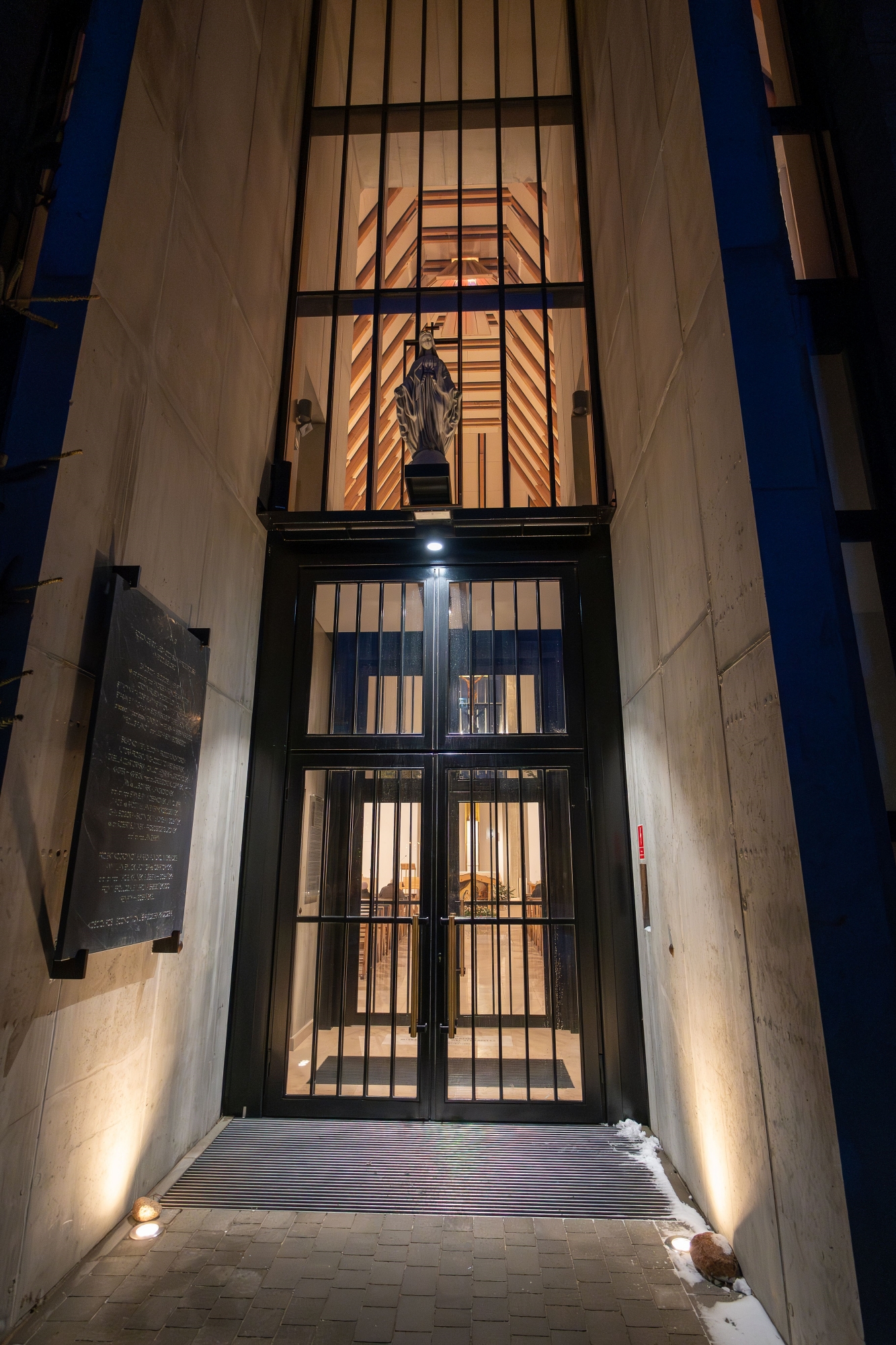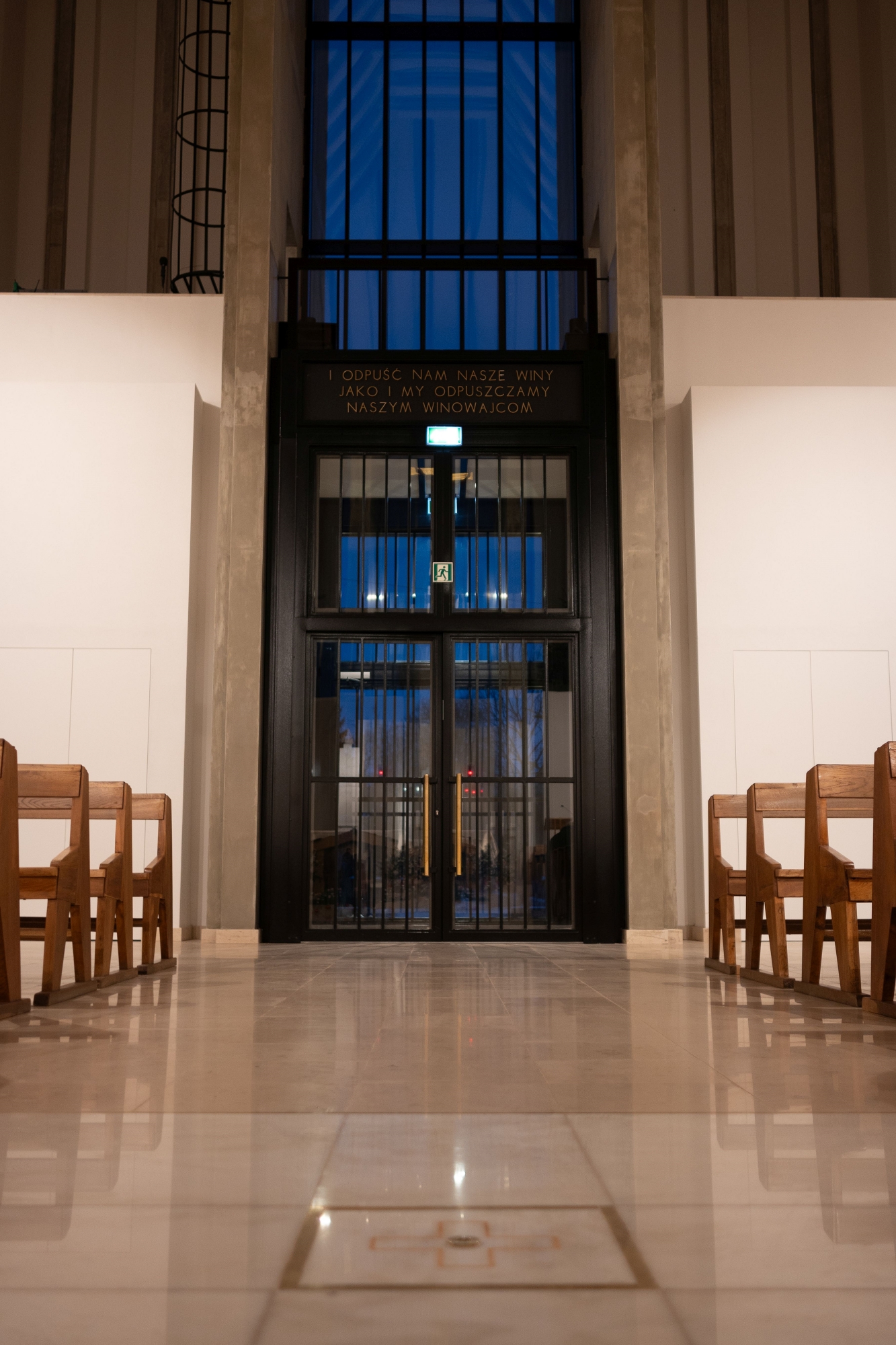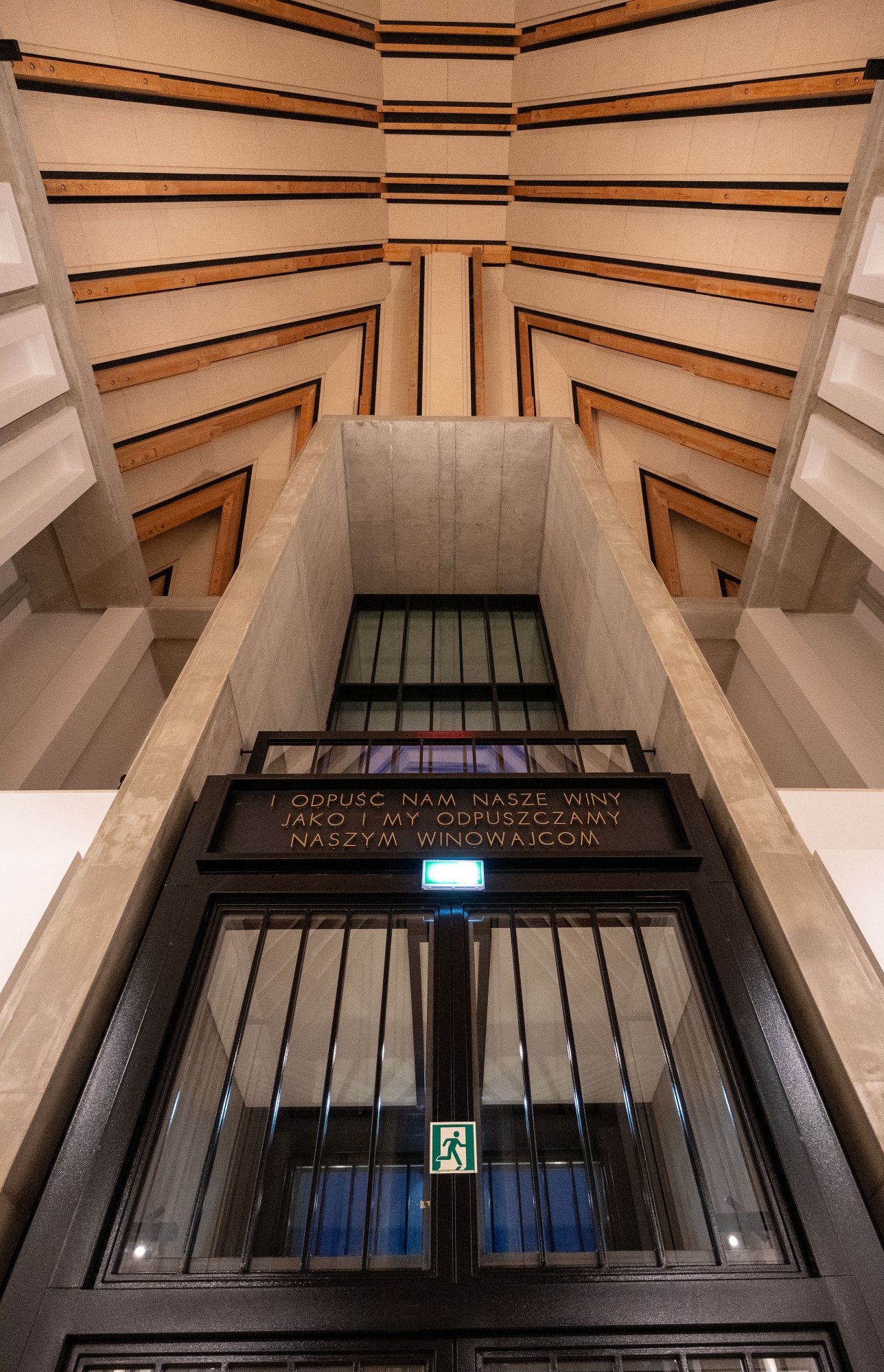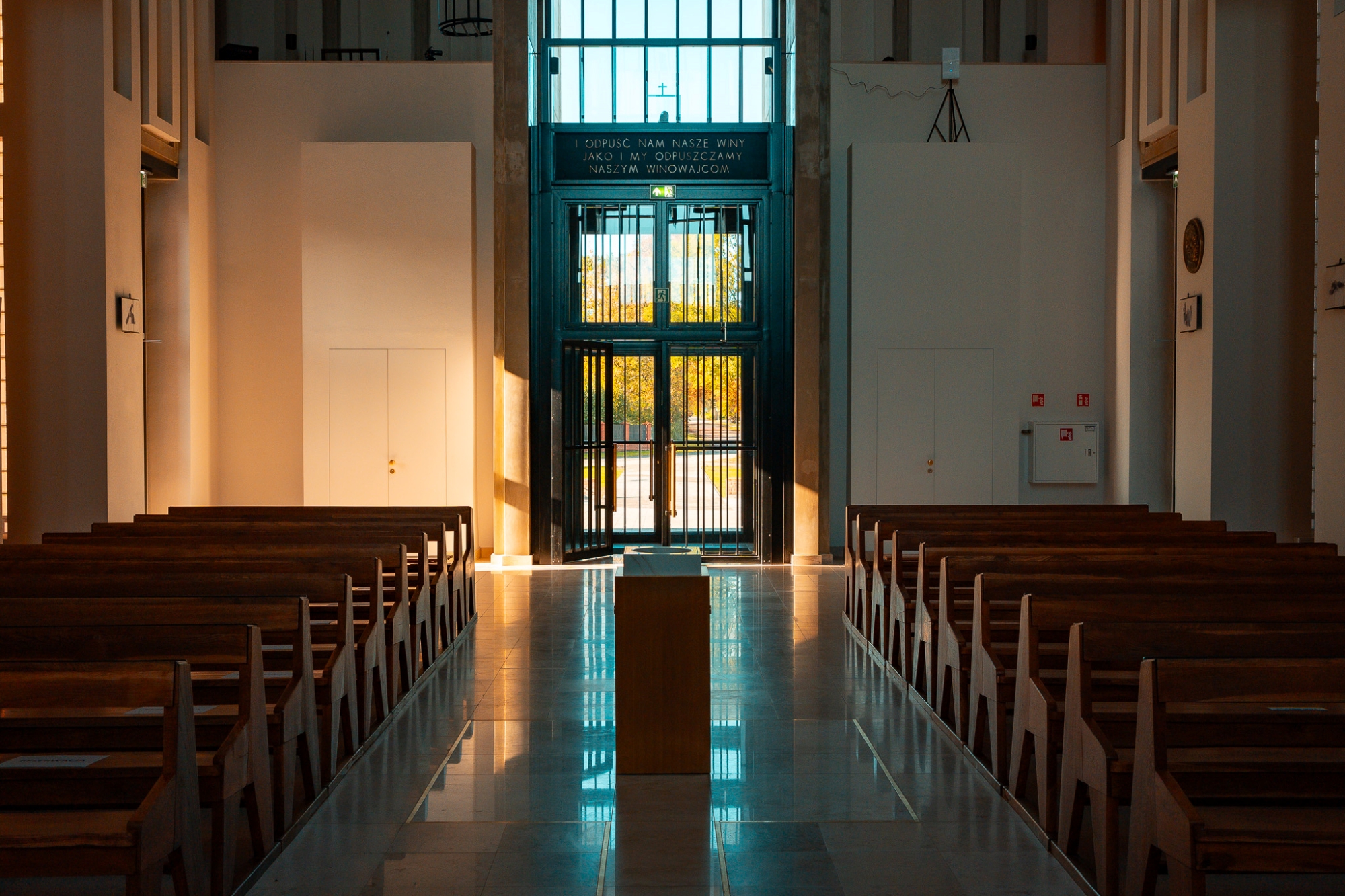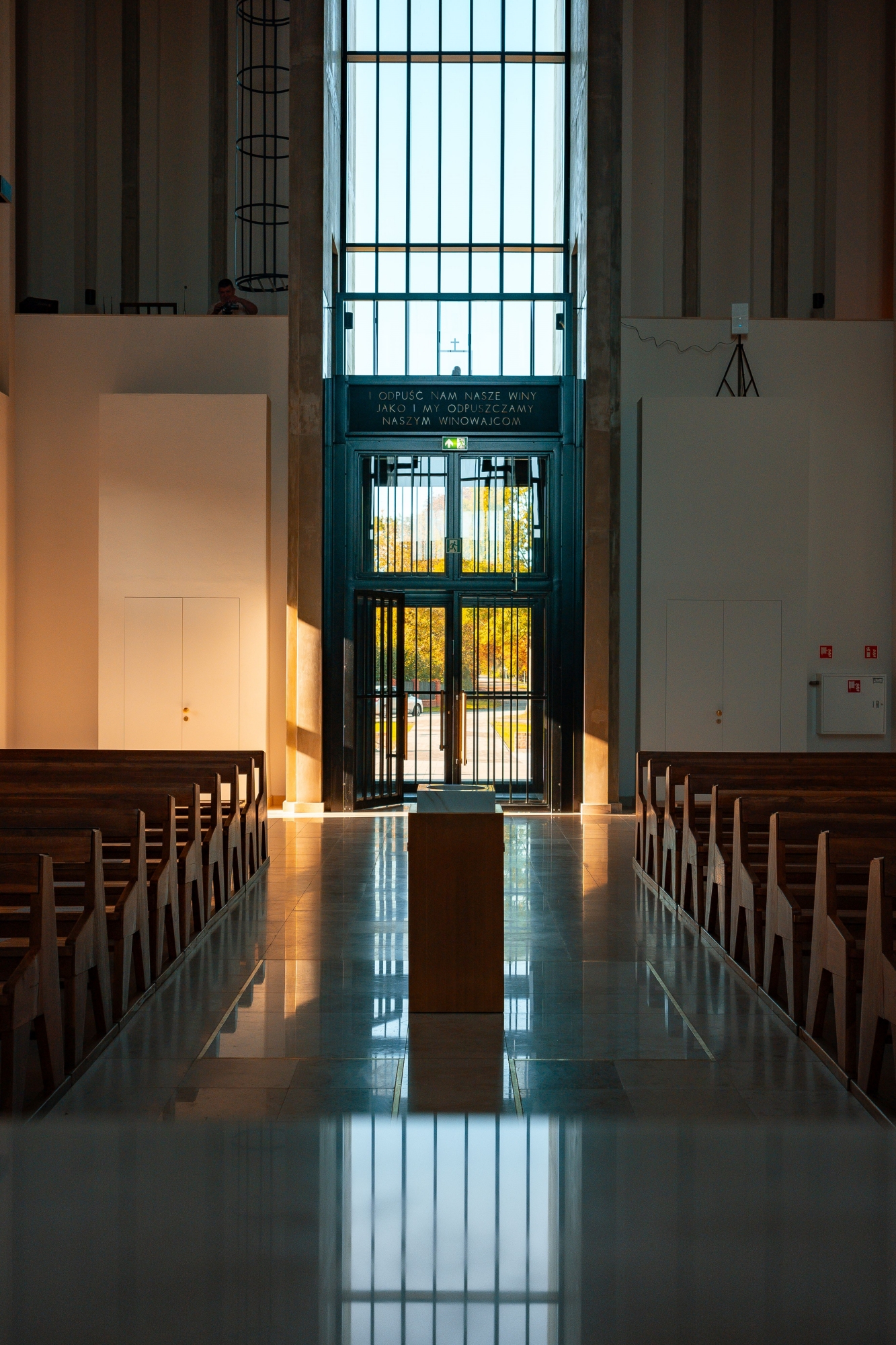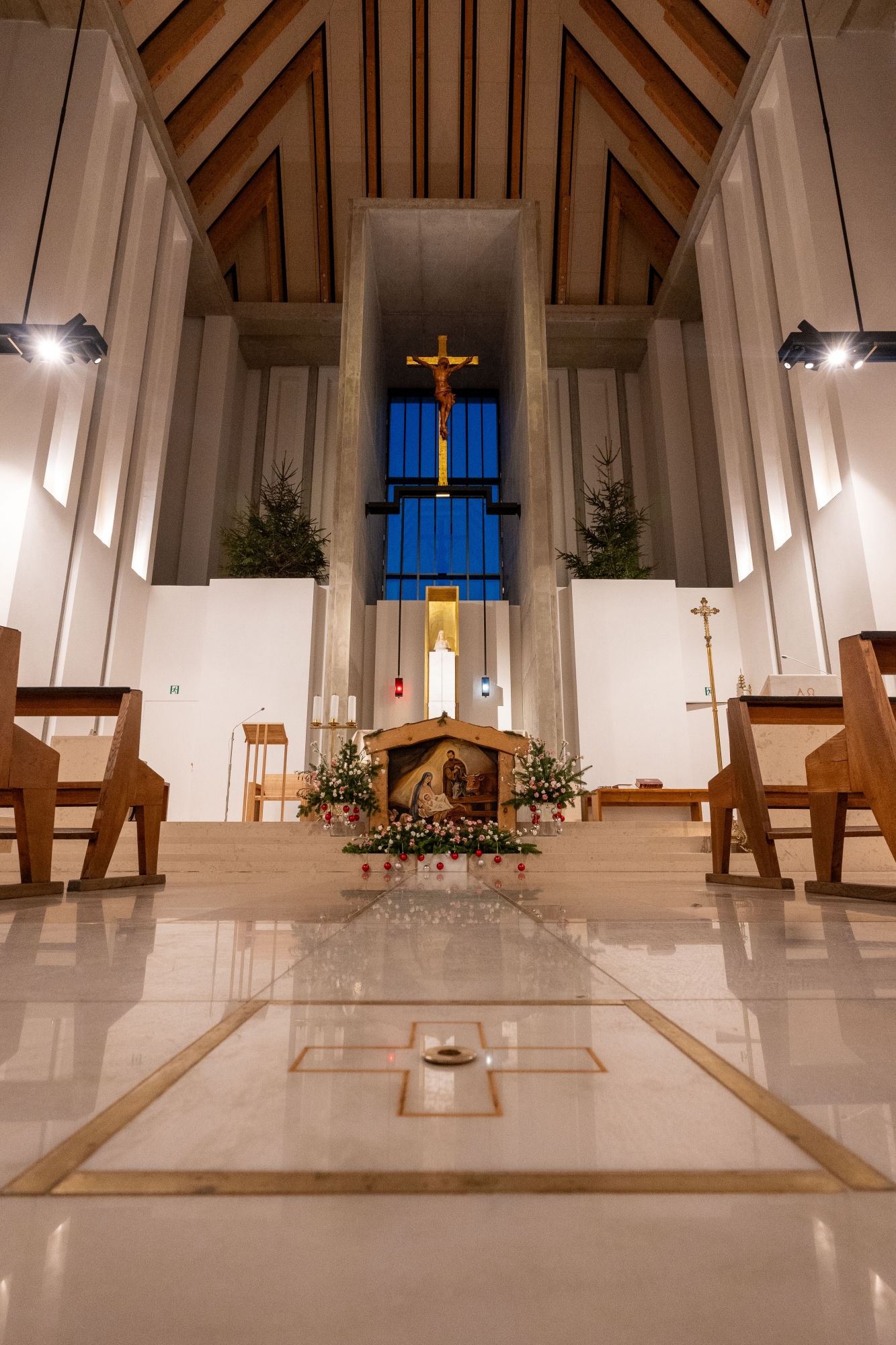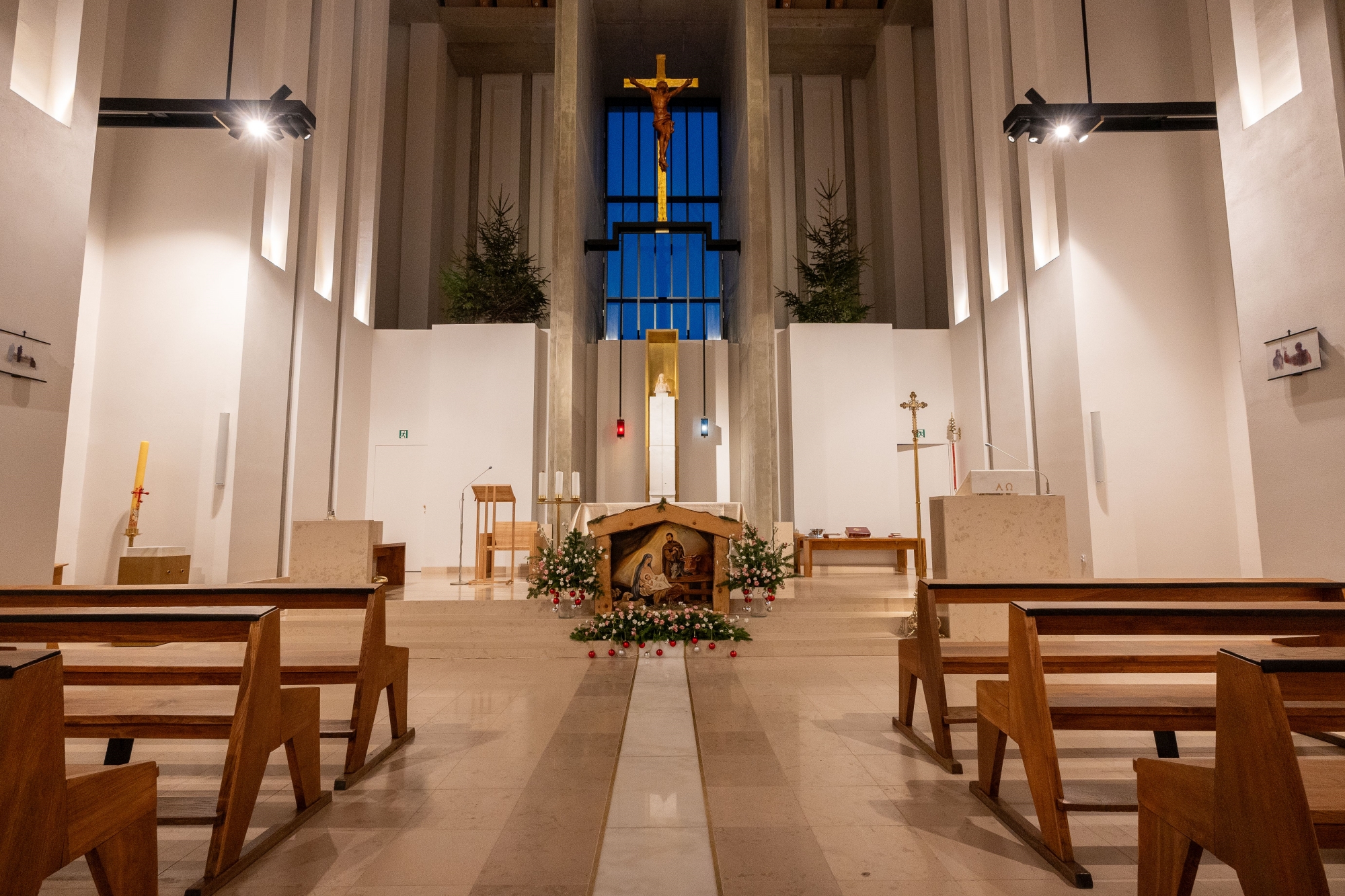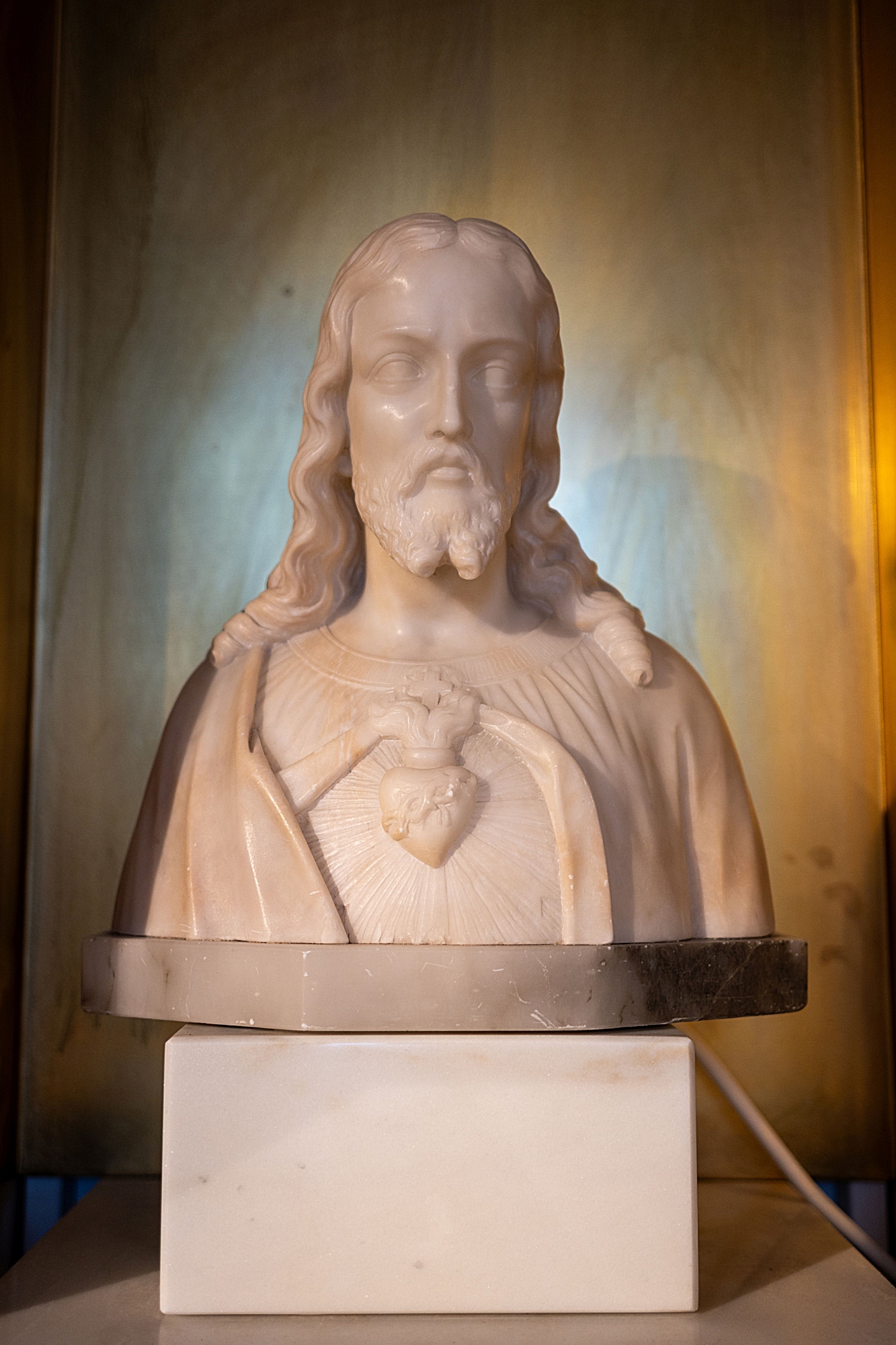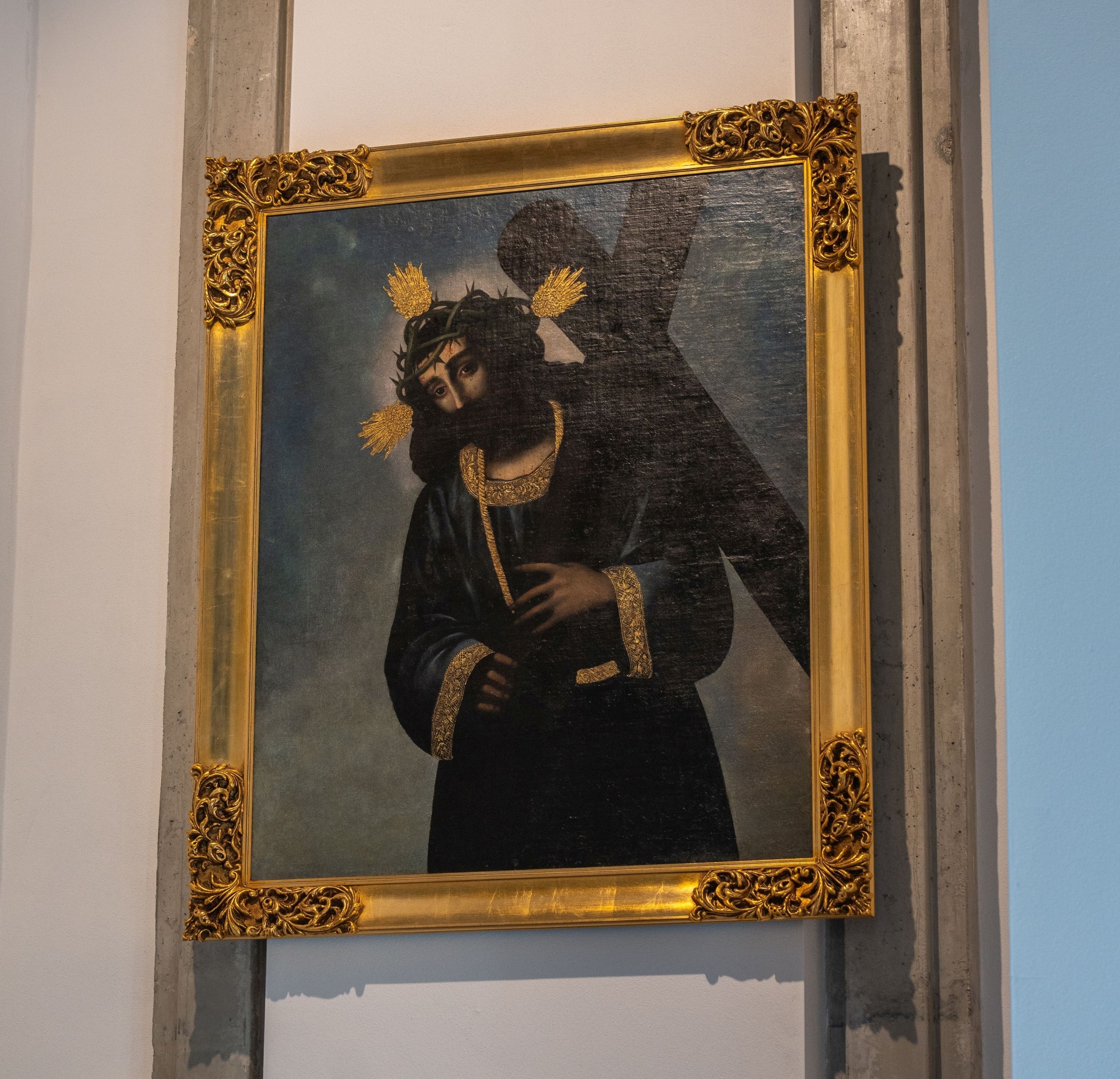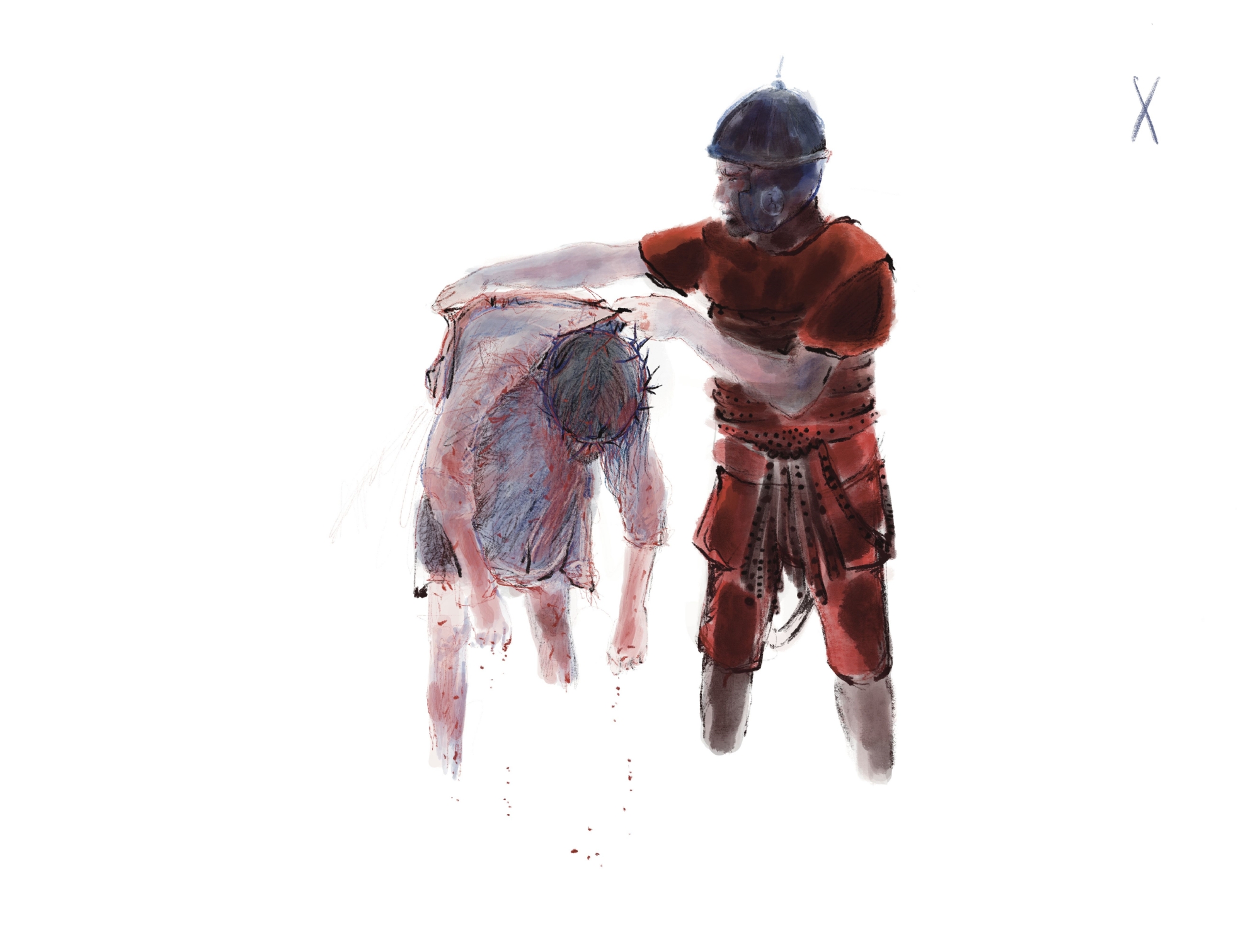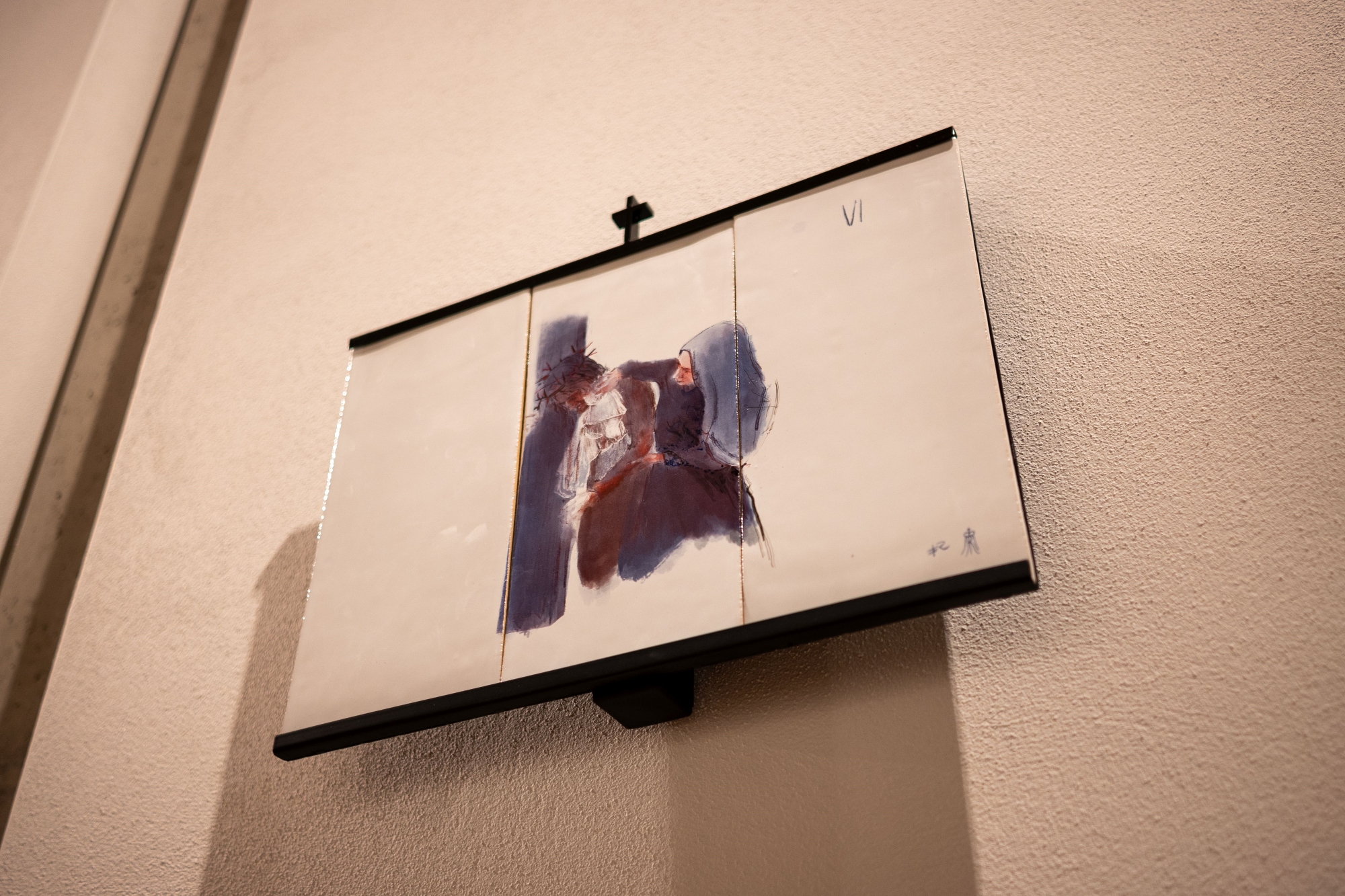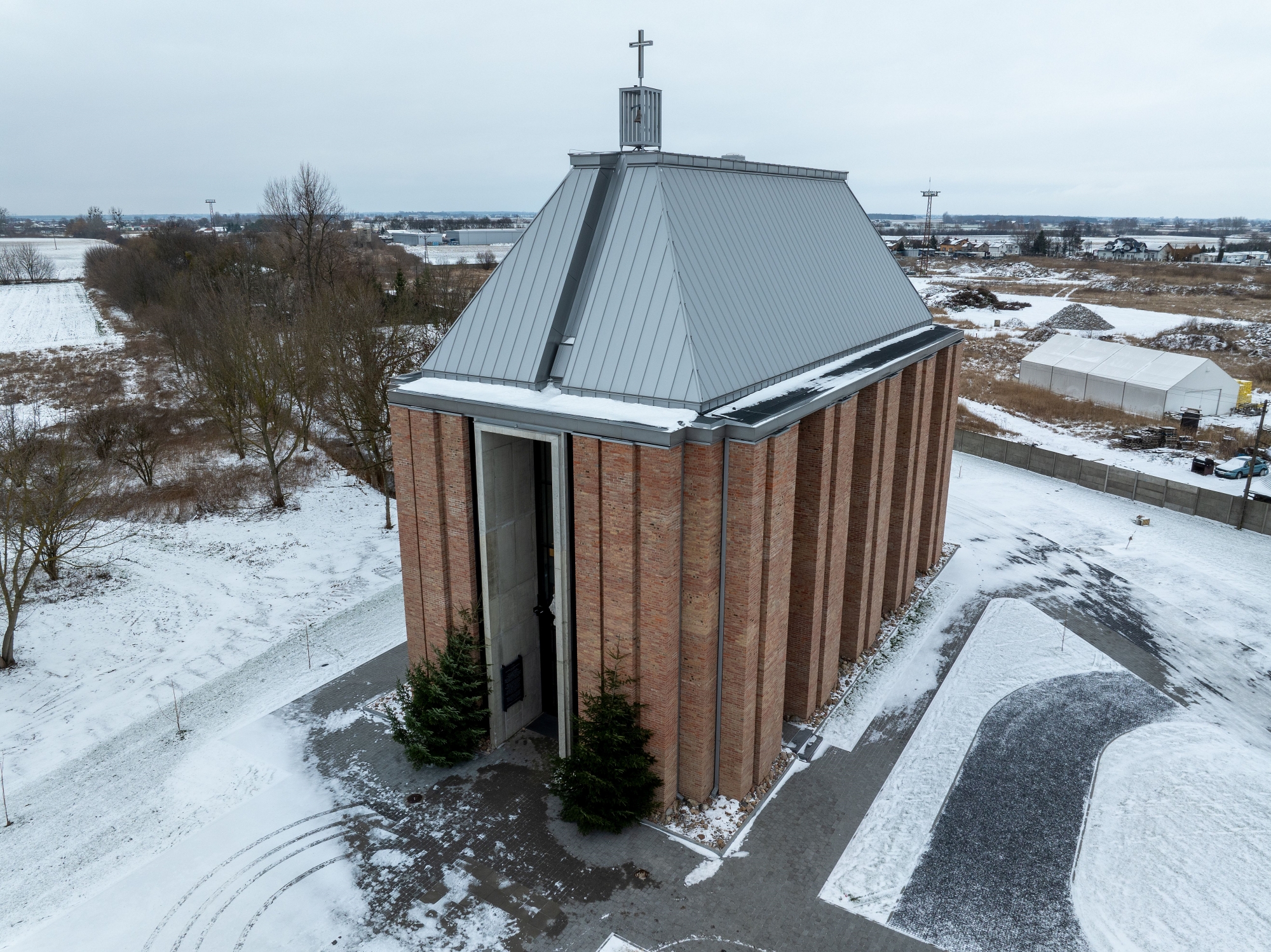The new church in Guzów near Żyrardów was built on the initiative of Michał Sobański, and its construction was financed by the Feliks Count Sobański Foundation. on 8 October 2023, a ceremony was held to lay the cornerstone and consecrate the church. It is a votive offering of the Sobański family on the occasion of the centenary of Poland’s regaining independence, is part of the discourse on contemporary sacred architecture and is the crowning achievement of the late 19th century foundation.
In 2009, the Sobański siblings established a foundation with the aim of rescuing the Neo-Renaissance palace in Guzowe and restoring it to the original appearance it had received in the years 1880 to 1895. The stately residence, integrally connected to the palace chapel of St Felix de Valois, lost its original appearance and architectural integrity after the war.
Michał Sobański (founder, left) and arch. Lech Szymborski with a visualisation of the new church, 2018, photo by Marcin Brzeziński
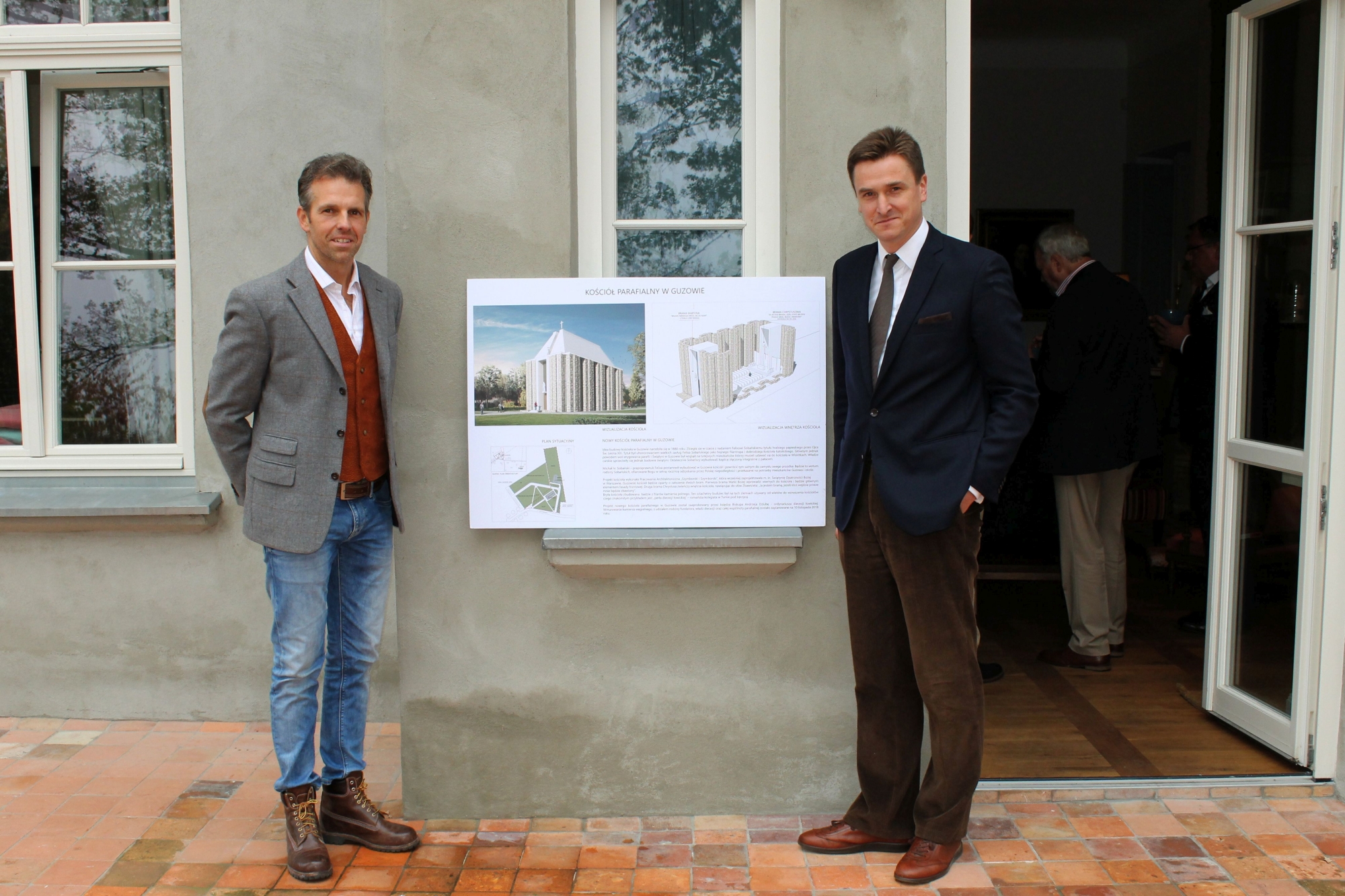
After nationalisation in 1945, the Sobanskis were thrown out of the family home. The palace was taken over by the Guzów sugar factory and housed offices and staff flats. The chapel and part of the park were given to the church for the purposes of the parish, which was established in 1984. Previously, the church had housed a pastoral centre. In 1996, the Sobański family bought the ruined palace and a few years later, a major renovation began, which saved the structure of the building, completely renovated the facade and began revitalising the surroundings. We wrote about the renovation of the palace HERE. The chapel next door was in much better condition than the palace, but clumsy renovations and alterations had compromised the original design. Michał Sobański entered into talks with the Diocese of Łowicz and the inhabitants of Guzów. These led to a consensus on the future of the palace chapel. It was decided that the foundation would build a new parish church, which would be handed over to the diocese, and the manor chapel would return to the Sobański family. The resulting shrine was a votive offering to mark the centenary of the restoration of independence and completed a unique foundation project once started by Feliks Sobanski.
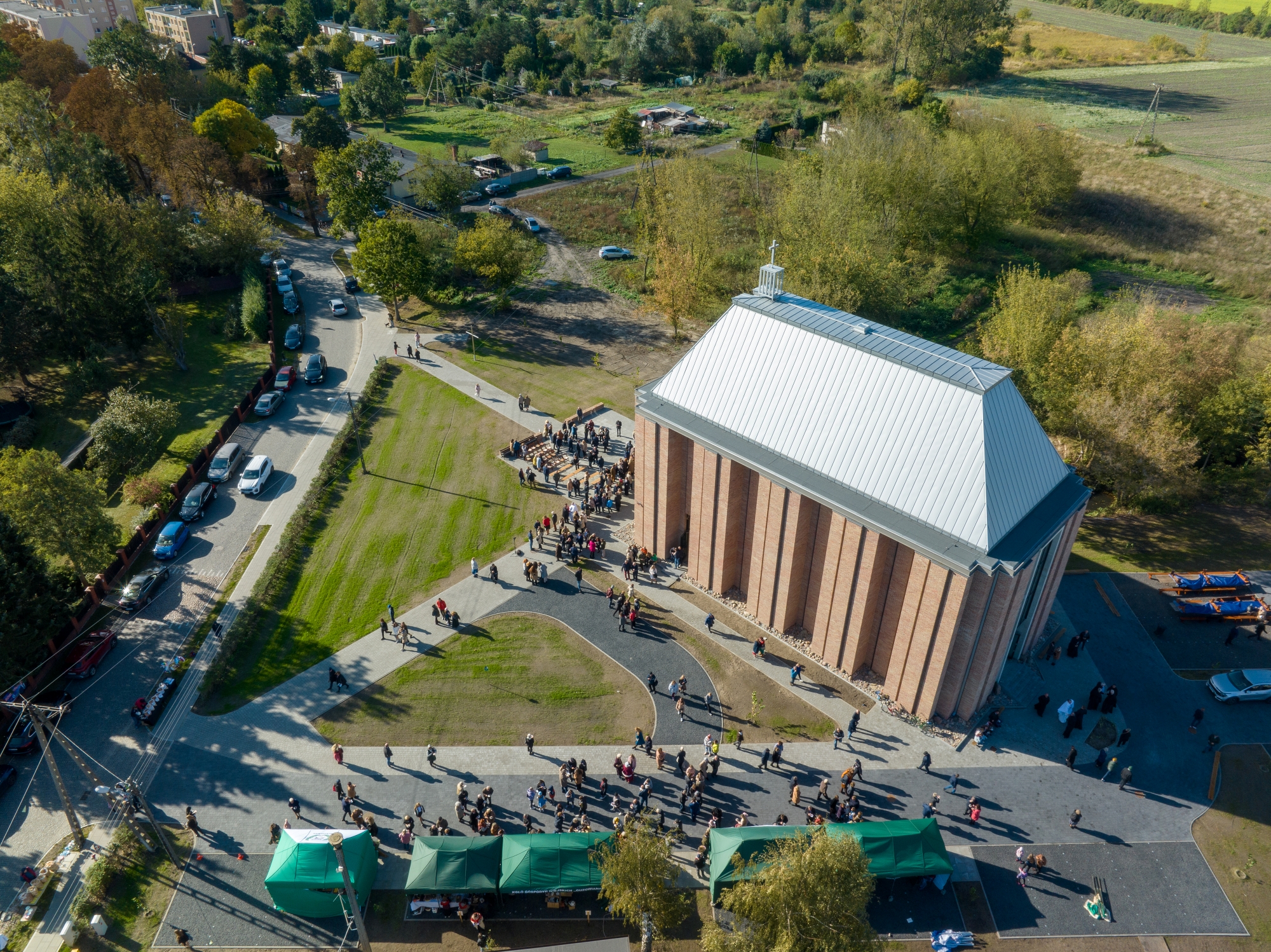
The idea of building a church in Guzów was born in 1880. Feliks Sobański was given the title of Papal Count by Father St. Leo XIII. The title honoured his great services as a generous philanthropist and benefactor of the Catholic Church. However, the main intention of erecting a temple in Guzow was for the sake of the local inhabitants, who had to travel to the church in Wiskitki. The Tsarist authorities opposed these plans. Eventually Feliks Sobański erected a private palace chapel, which he made available to the inhabitants. The consecration of the cornerstone for the chapel took place on 11 July 1892. At that time, Feliks Sobański announced that the following excerpts from the DAD OUR prayer would adorn the sacred and charitable buildings he had erected. The following quotations were placed during the founder’s lifetime:
OUR DAD, WHO IS IN HEAVEN HOLY BE YOUR NAME – on the façade of the palace chapel of Saint Felix de Valois in Guzow
FOLLOWYOUR KINGDOM – on the façade of the church in Bartniki/Radziwiłłów
On the wall of the hospital inGuzow
OUR Bread – on the wall of the annex of the Sobanski Palace at 13 Ujazdowskie Avenue in Warsaw
I NIE WÓDŹ NAS NA POKUSZENIE – on the wall of the school for children from workers’ families at 17 Śniadeckich Street in Warsaw
SAVE US FROM EVIL AMEN – on the wall of the apse of the palace chapel in Guzów.
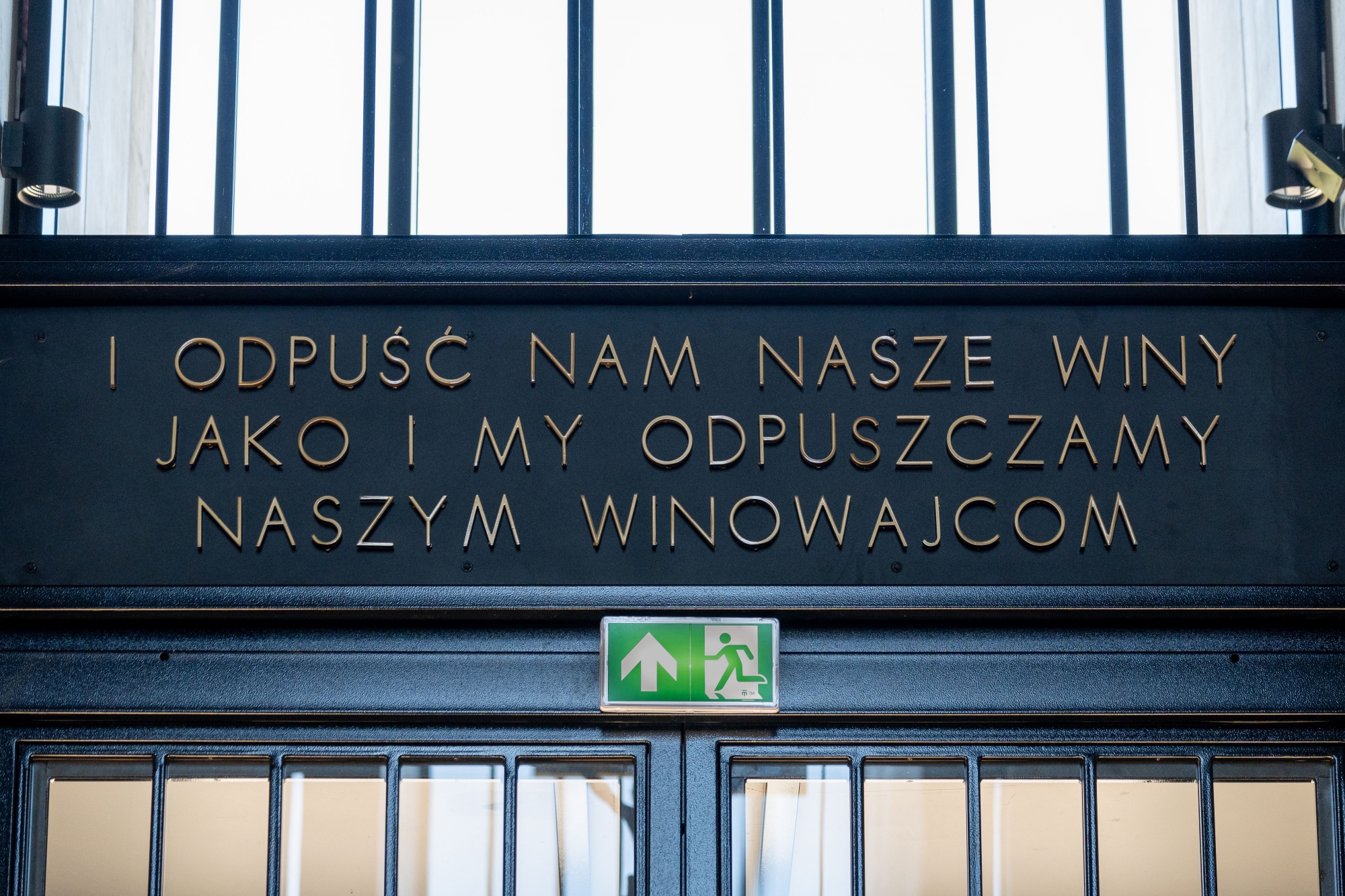
The foundation work was undertaken and completed after one hundred and thirty years by his great-great-grandson Michał Sobański, president of the Feliks Count Sobański Foundation, with the support of vice-president Izabela Sobański and members of the Foundation and the temple building committee. The interior of the church was decorated with the last missing fragment, OUR FATHER – AND FORGIVE US OUR INJURIES AS WE FORGIVE OURSELVES. In doing so, Michal Sobanski fulfilled the will of his ancestor. When the decision to build the church was taken, the founder asked architect Lech Szymborski of the Szymborski and Szymborski studio for help.
“We knew each other for many years and often talked about good architecture, both modern and historic . In addition, Michał Sobański was interested in the fate of the Temple of Divine Providence designed by me and my father. Our cooperation started with the idea of an investor and inviting me to this project” – recalls the architect.
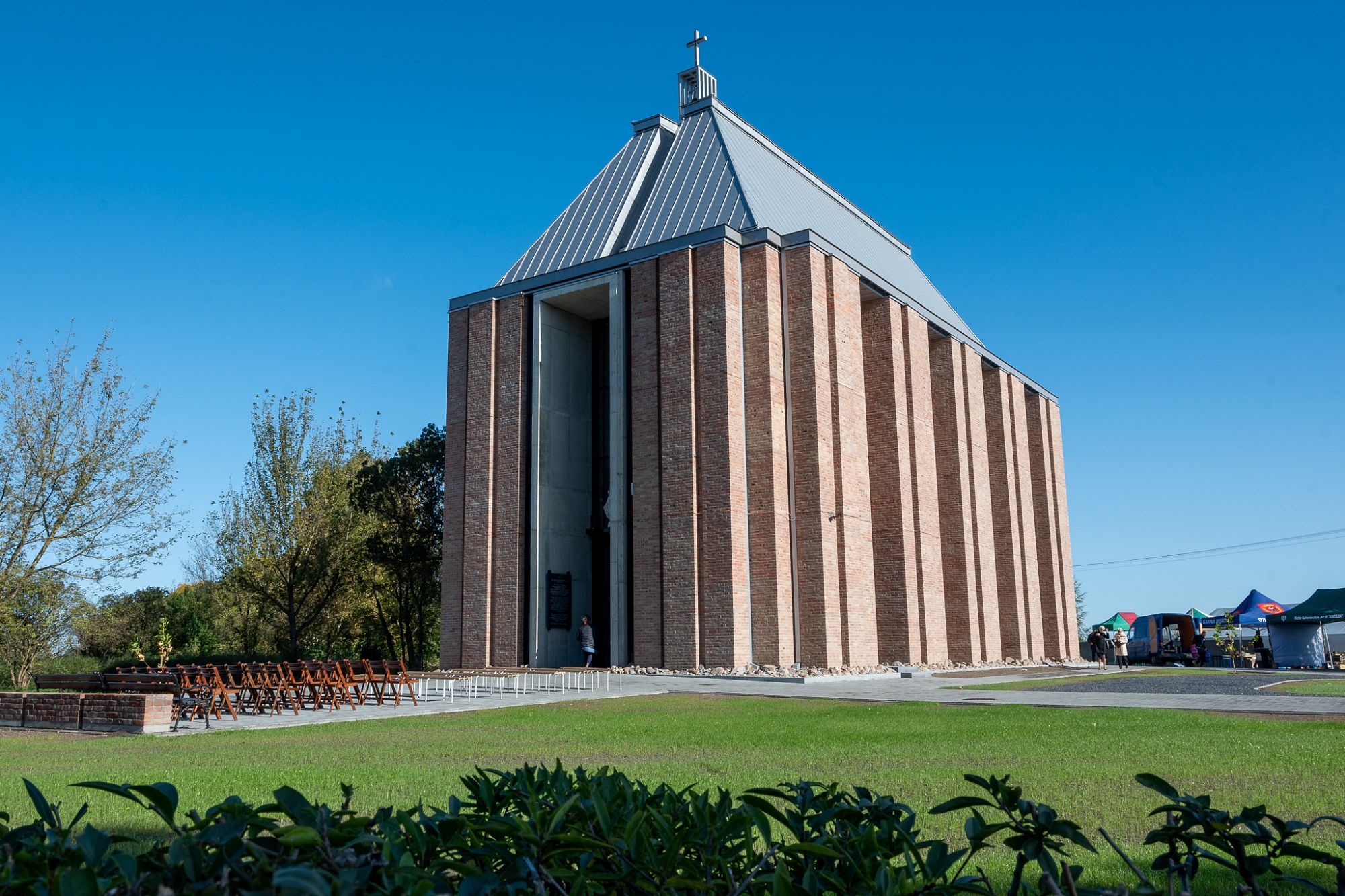
The consecration of the site for the new church and rectory and the digging of the ‘first shovel’ took place on 18 May 2019. Construction work, which took four years, began. According to Lech Szymborski’s plan, the guzov church is based on the foundation of two gates. The first gate – Our Lady – introduces the faithful to the church and is the main element of the front facade. The second gate – of Christ – crowns the interior of the church and refers to the Saviour’s words: “I am the gate. If anyone enters through me, he will be saved”.
“The uniqueness of this foundation lies in the fact that the construction of the church, which refers to the project of erecting a temple by the Sobański family back in the time of the Partitions, is up-to-date and meets local needs today. The church, together with the adjacent square and park, will form the new social centre of Guzów. It is remarkable that the Foundation not only financed the project, but was also responsible for managing the entire investment, for all design and execution arrangements at every stage. The opportunity to discuss and make creative decisions with an extremely aesthetically conscious investor had a fundamental influence on this realisation and was an inspiration and a great experience for me,” – lech Szymborski points out.
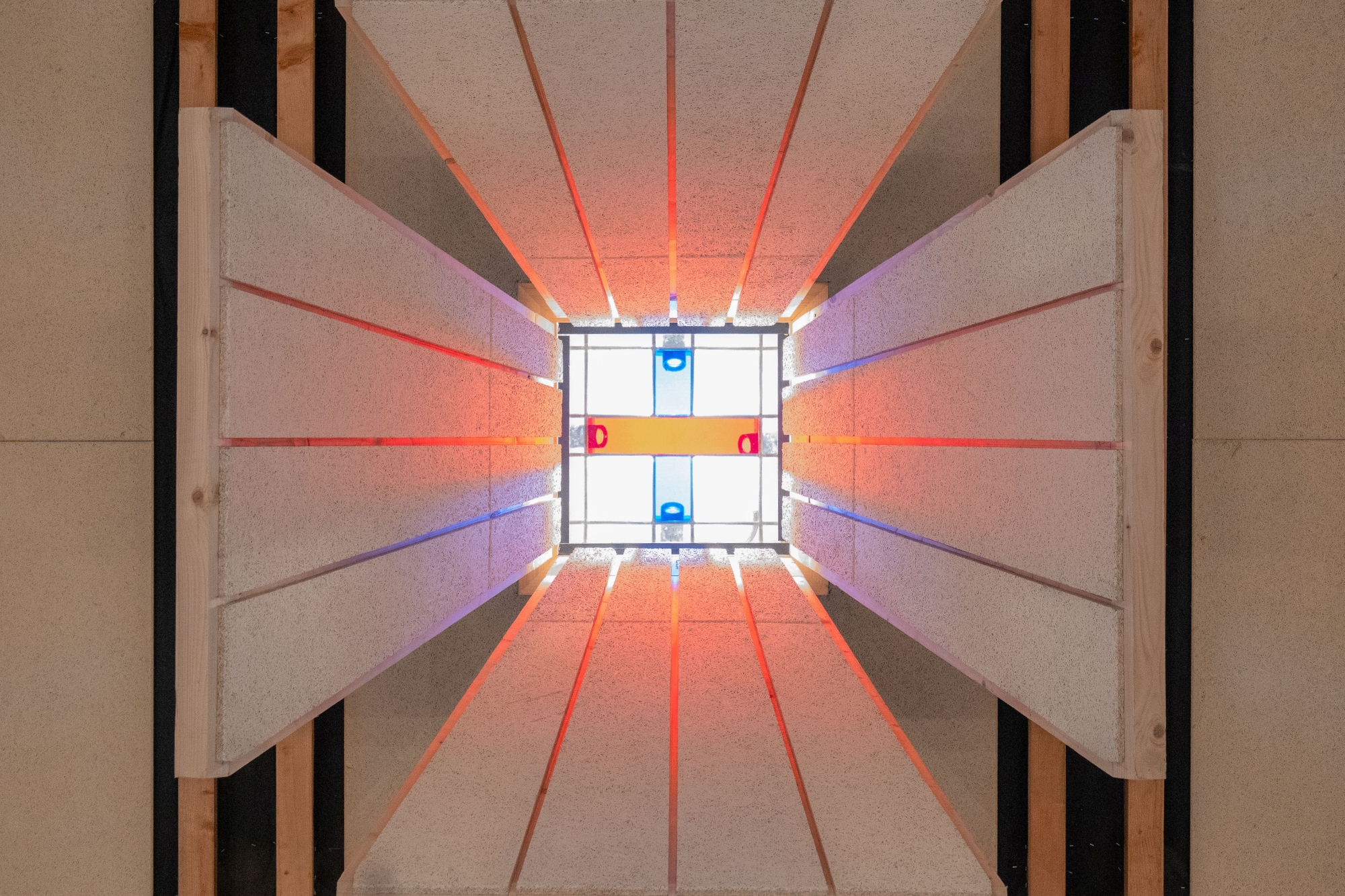
A symbolic representation of human life in union with God has been integrated into the interior architecture. The skylight in the ceiling is decorated with a blue and red cross of the Trinitarians (Order of the Holy Trinity), whose co-founder was St Felix de Valois, patron of the Łubieński and Sobański families and the chapel in guzów. A streak of light falls through a stained glass window onto a slab of white marble floor with a cross, the place where the baptismal font will be placed. Further down the marble strip runs to the tabernacle, made of the same stone, over which the cross is placed.
“The new church in Guzow is built of concrete, brick and wood. An interesting challenge was the implementation of the façade walls. We used handmade brick of the ‘Zendra’ type. Its uniqueness lies in its colour variety and irregular surfaces. We used this brick to build a facade with a vertical soaring pattern of columns arranged in different planes. Itwas an extraordinary challenge to design almost all the interior elements such as the altar, the tabernacle column, the pulpit, the baptismal font, the lamps and the entrance door,” adds the architect.
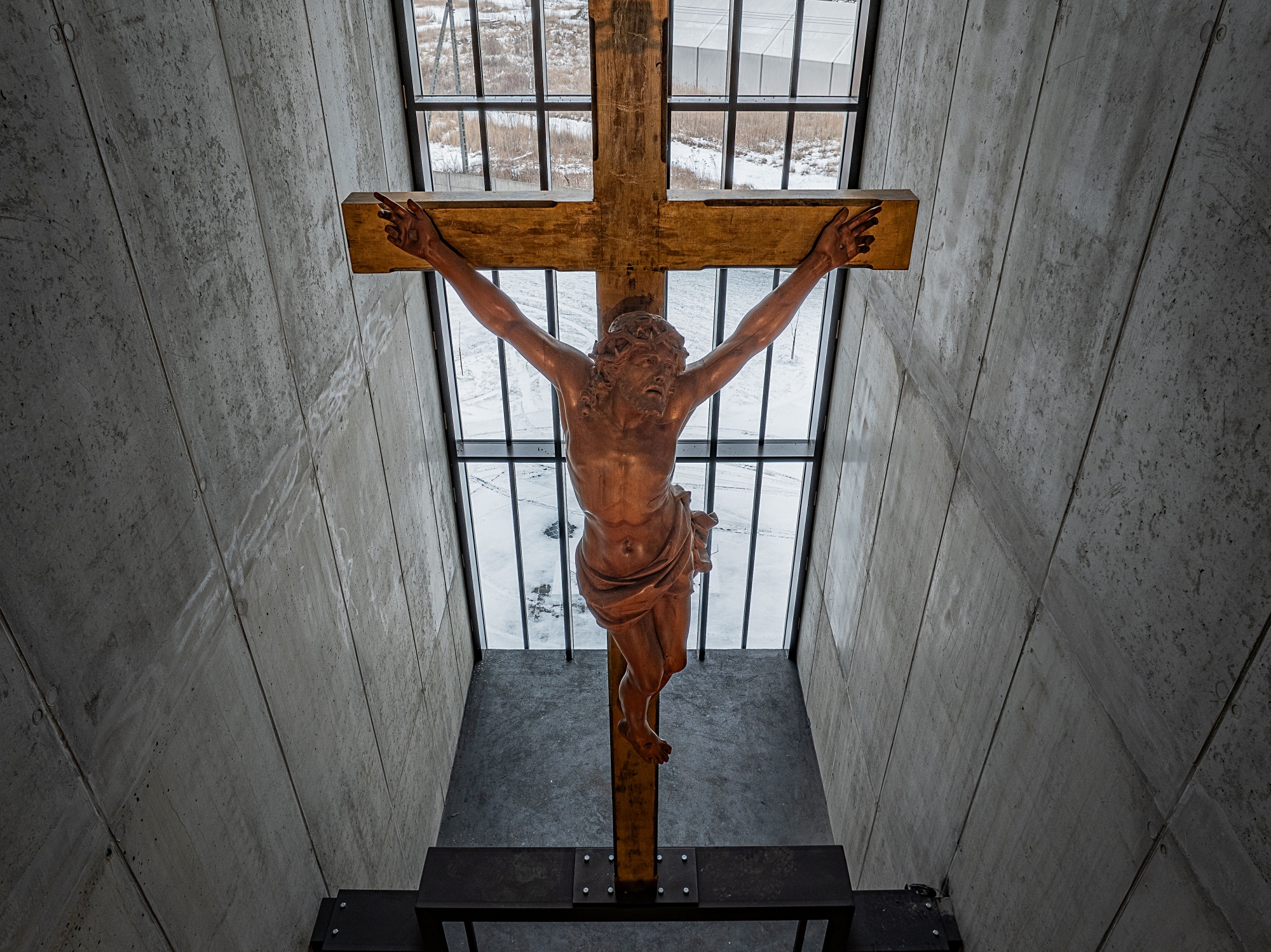
The main altar contains a sculpture by Italian artist Giuseppe Gambogi (1862-1938) of the ‘Sacred Heart of Jesus’, made of alabaster and donated by the founder. Above is a cross relocated from the palace chapel, symbolising the link between the old and modern shrine and the two foundations of the Sobanski family. This cross was an integral part of the pre-war furnishings of the Chapel of St Felix de Valois. The relics of Blessed Stefan Cardinal Wyszyński (the church’s patron saint) were placed in the shrine, together with a brass medallion with the Primate’s likeness. A wide range of donors contributed to the furnishings of the shrine, including the Stations of the Cross, designed and painted by Elżbieta Radziwiłł, were made at the majolica manufactory in Nieborów, and the church bell was donated by the parish priest of Our Lady of Czestochowa in Zielonka, Father Kazimierz Seta, with the support of Piotr Jamski.
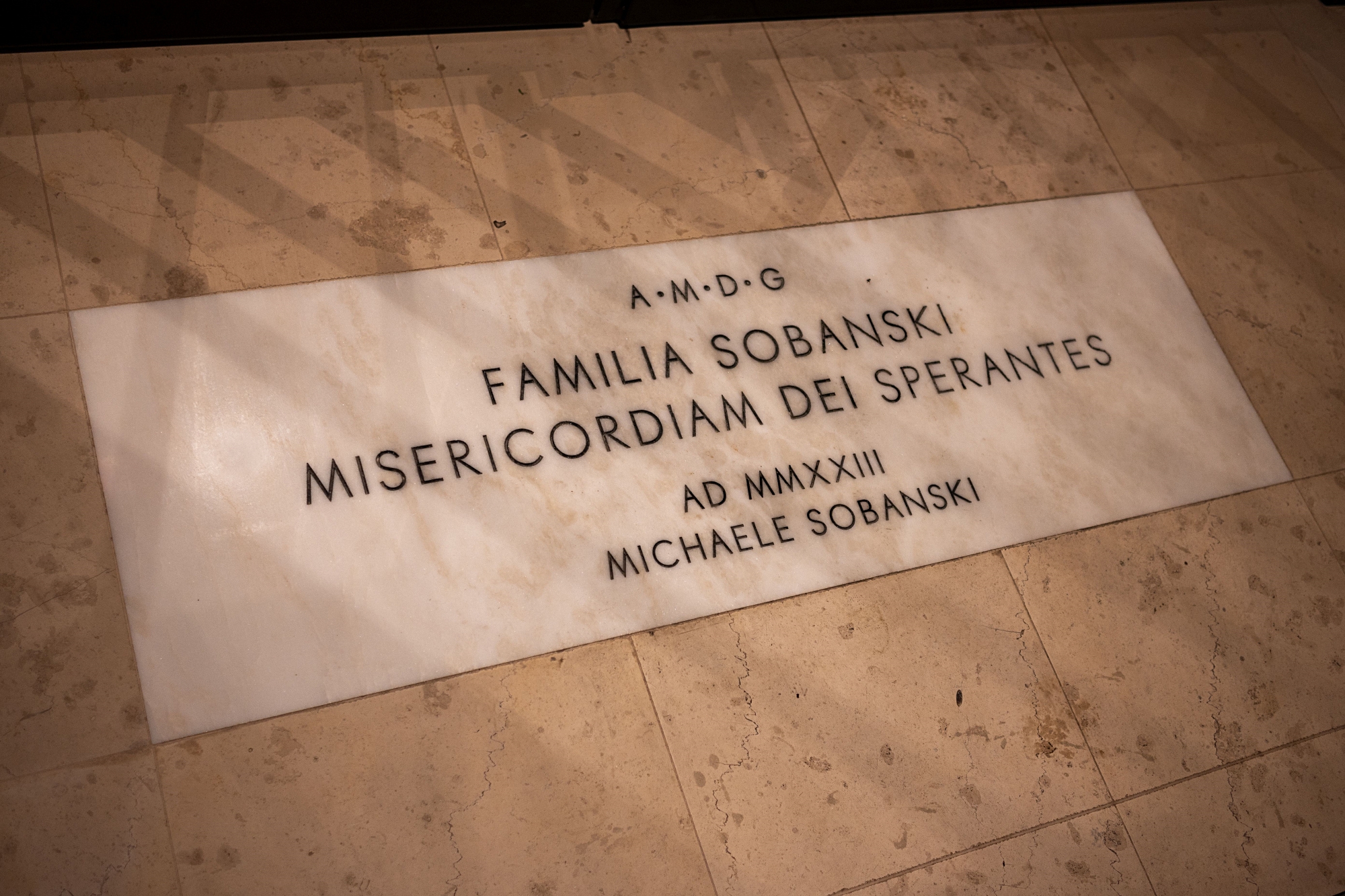
The construction of the new church was carried out under the leadership of Msgr. Prof. Andrzej F. Dziuba and in collaboration with Rev. Dr. Robert Sumiński, and with the support of the Mayor of the City and Commune of Wiskitki Rafał Mitura, commune councillors, as well as parishioners from Guzów and the surrounding area. A unique in the country private church foundation has been created, which is part of a long-term programme of revitalisation of the Guzów palace and park complex and its surroundings.
“When designing a church, it is necessary to find the specificity of the place so that the new building grows out of its context and local character.Architecture should be shaped from simple and noble materials, looking for timeless forms and avoiding current fashions and the desire to dazzle with showy forms,” emphasises Lech Szymborski.
Source: Feliks hr. Sobański Foundation
Design: Szymborski and Szymborski
Read also: sacred architecture | History | Minimalism | Architecture in Poland | Interesting facts | whiteMAD on Instagram




